Brunsviga MDIIR "special"
I received this machine with the request to restore it technically and optically, while retaining as much as possible of the originality of it. I will first discuss the restoration, and then what makes it special, so if you are just interested in this part, scroll right to the bottom.This is the machine as it arrived. Rusted handle is soaking in penetrant oil.
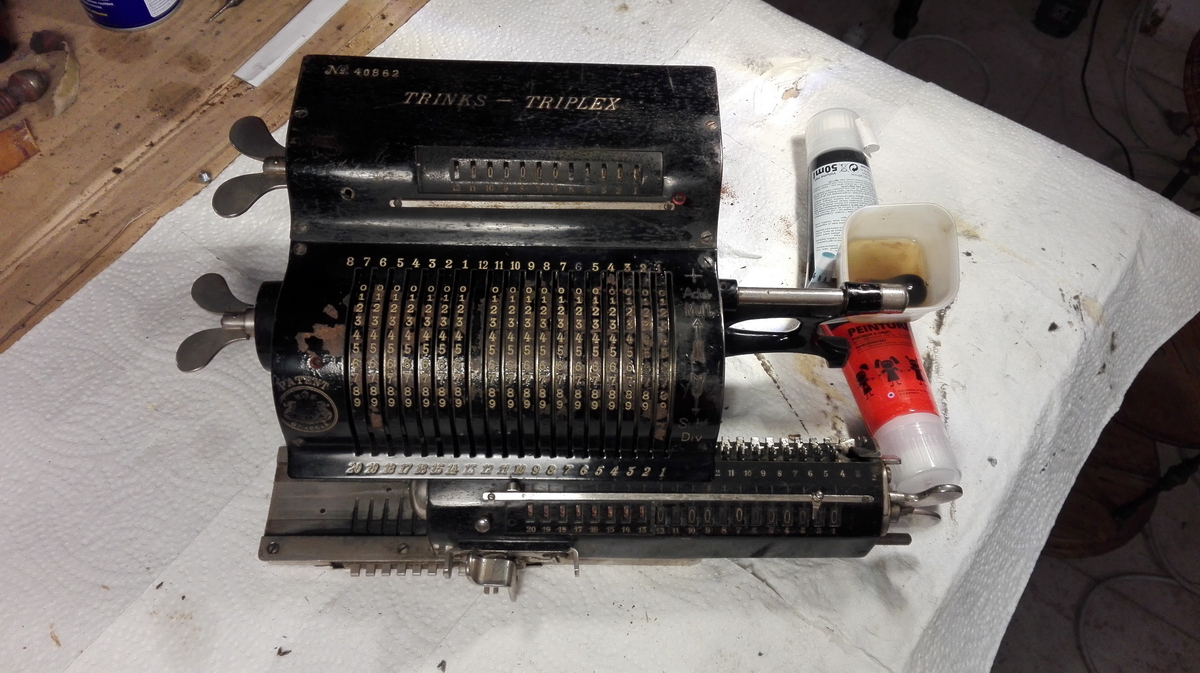
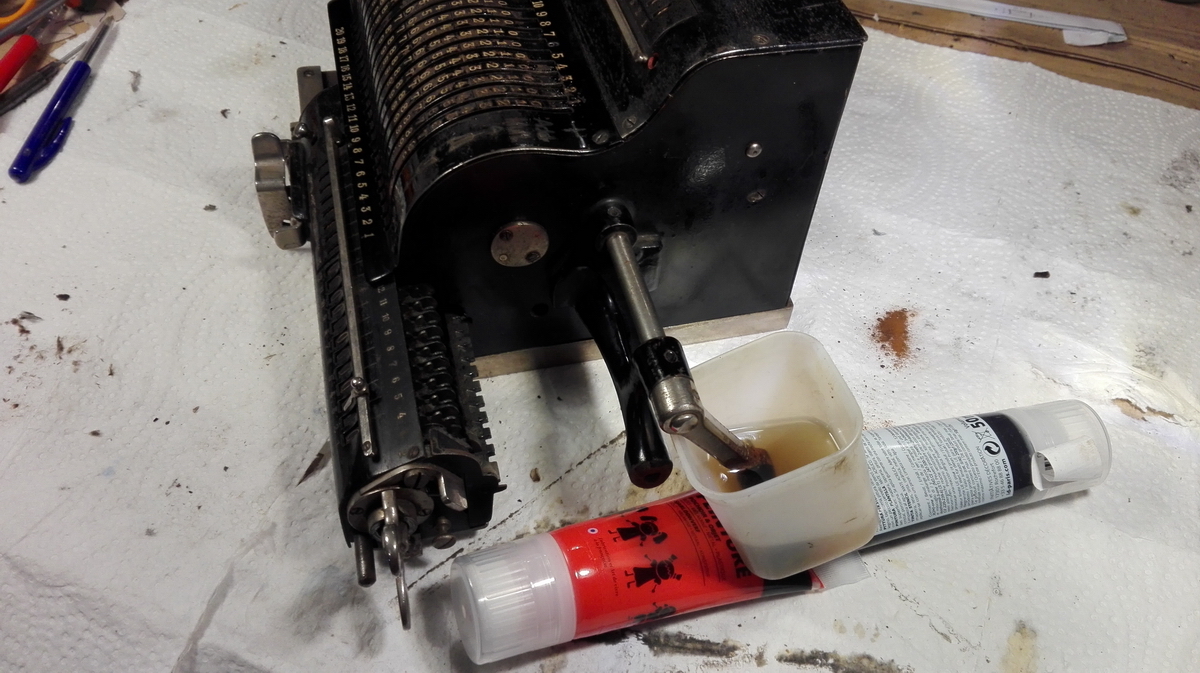
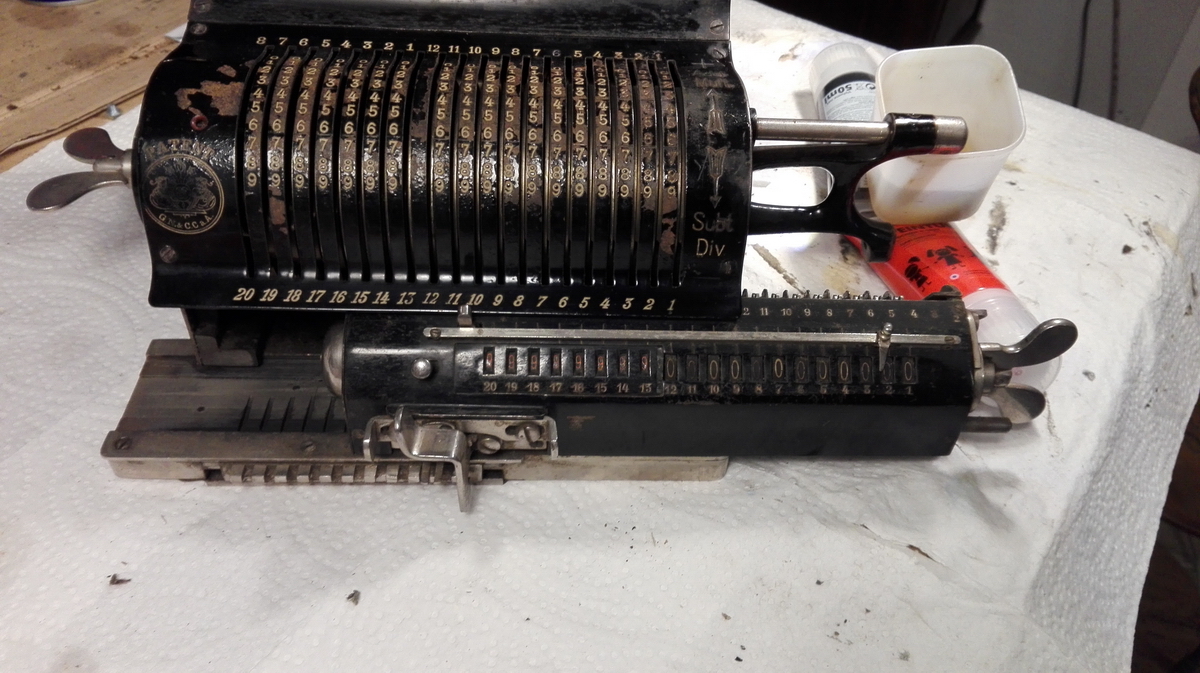
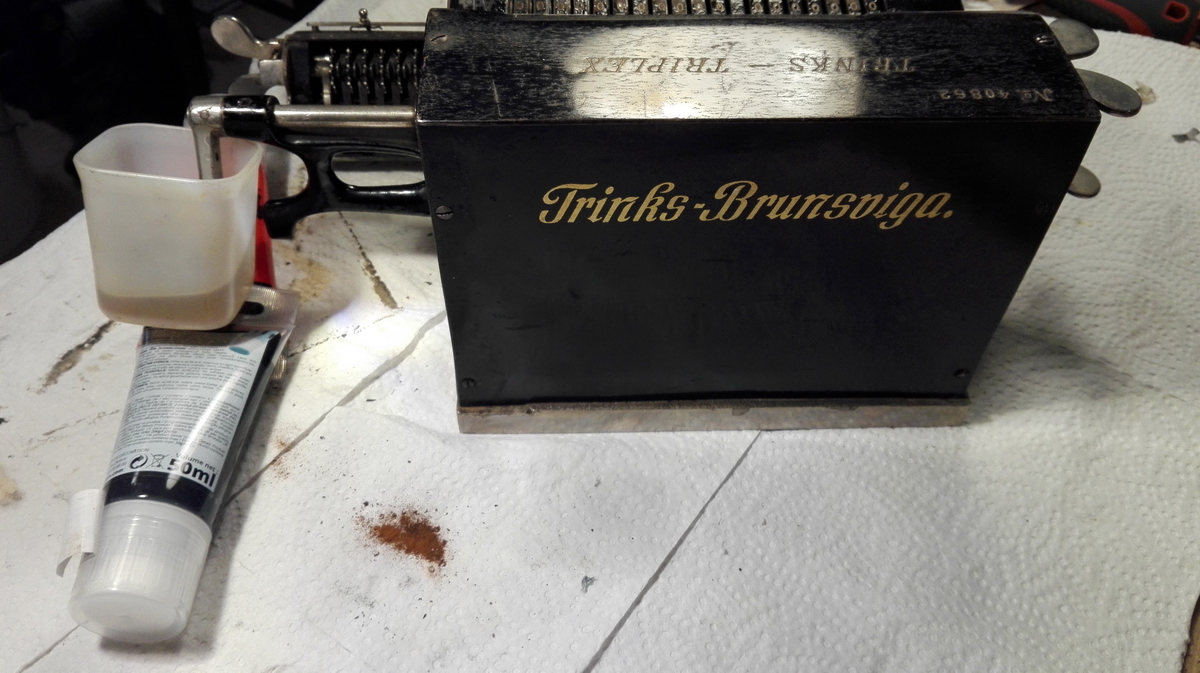
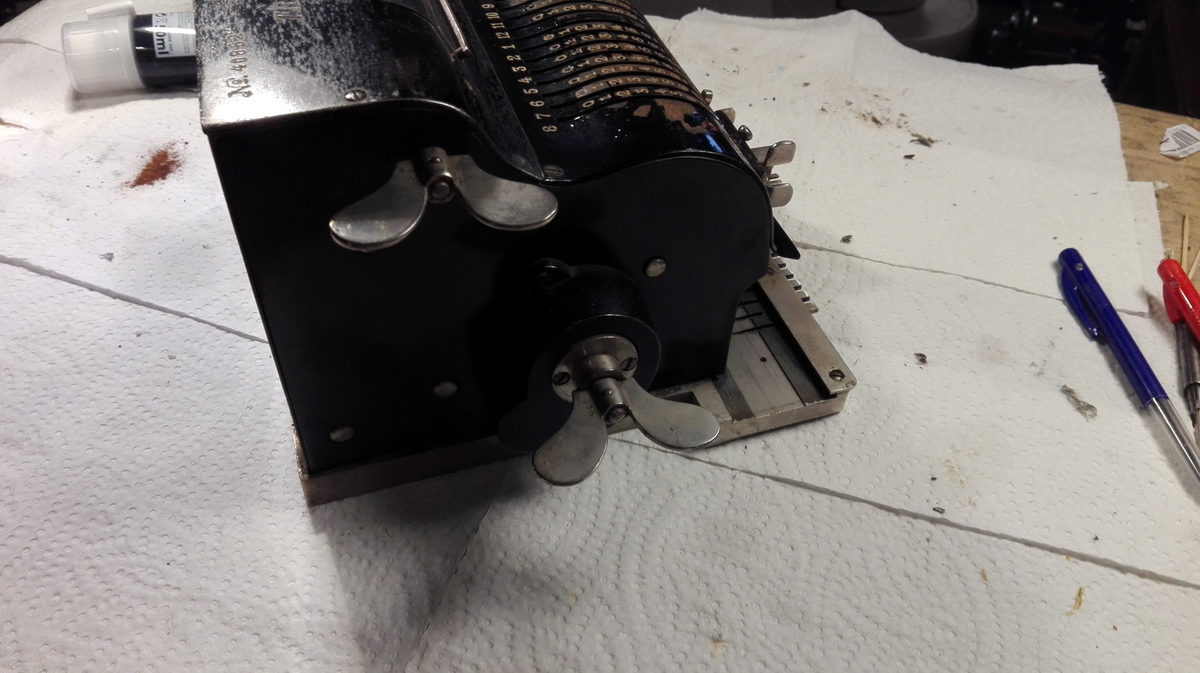
Machine was then disassembled.
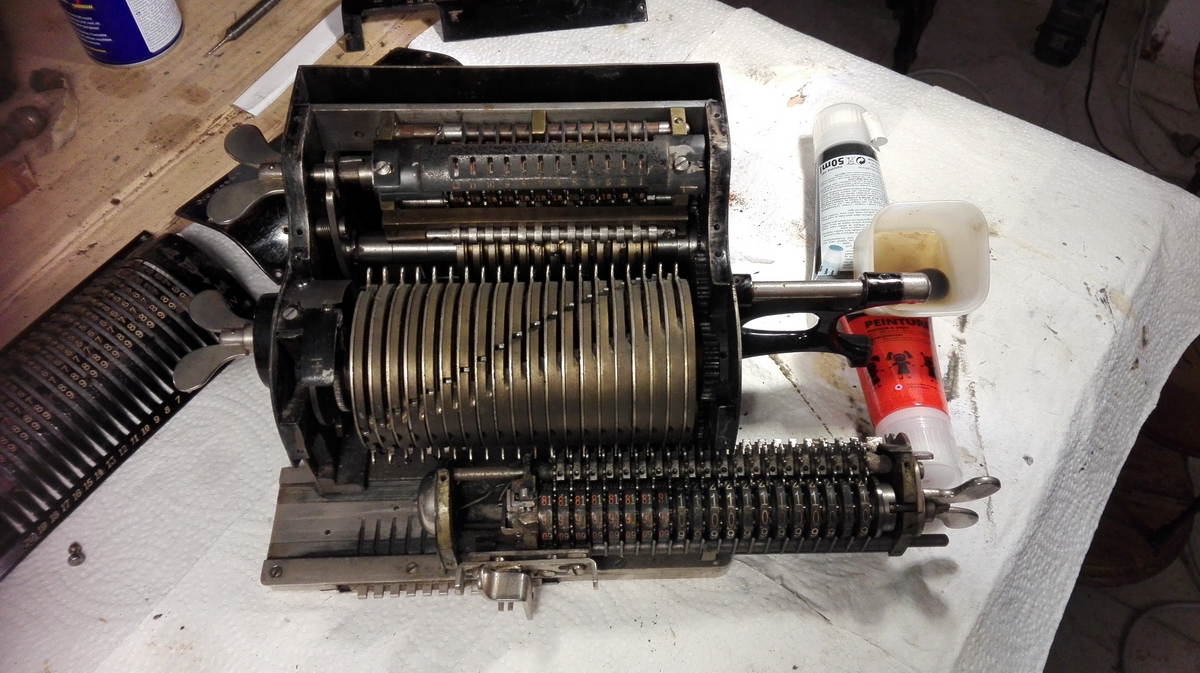
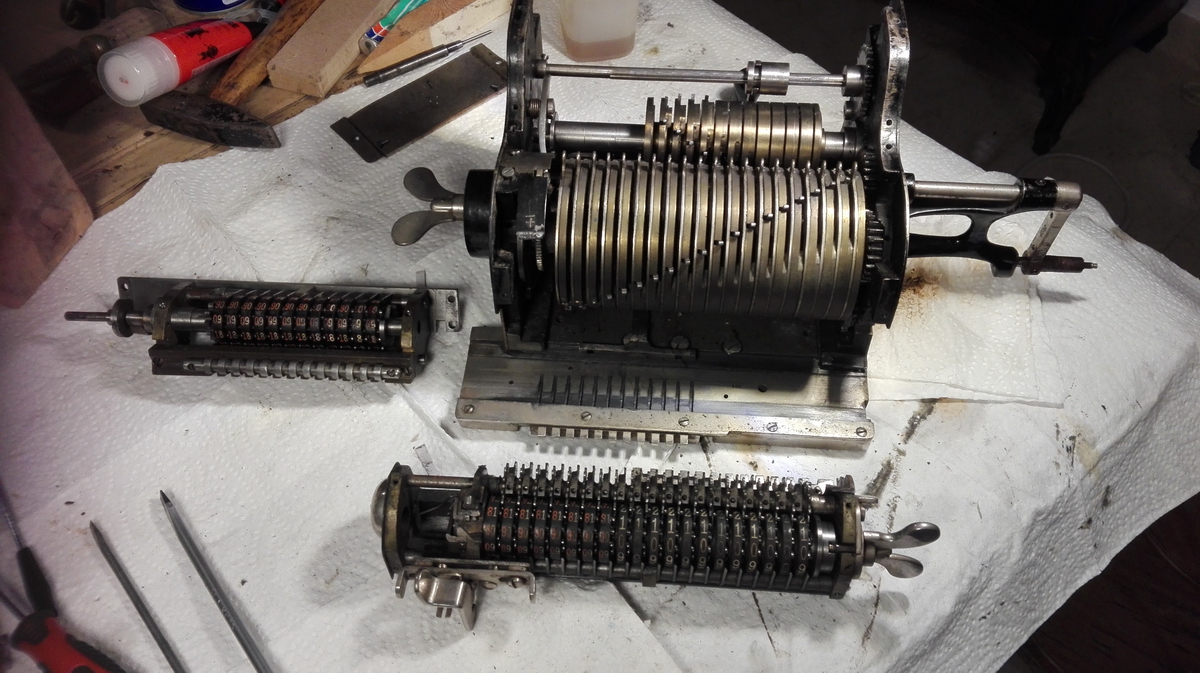
The machine is supposed to sit on a baseboard with a riser, or with a relief milled out for the carriage movement - otherwise the weight of the machine will crush this protective plate, and there will be issues with the tabulator working erratically, or not at all.
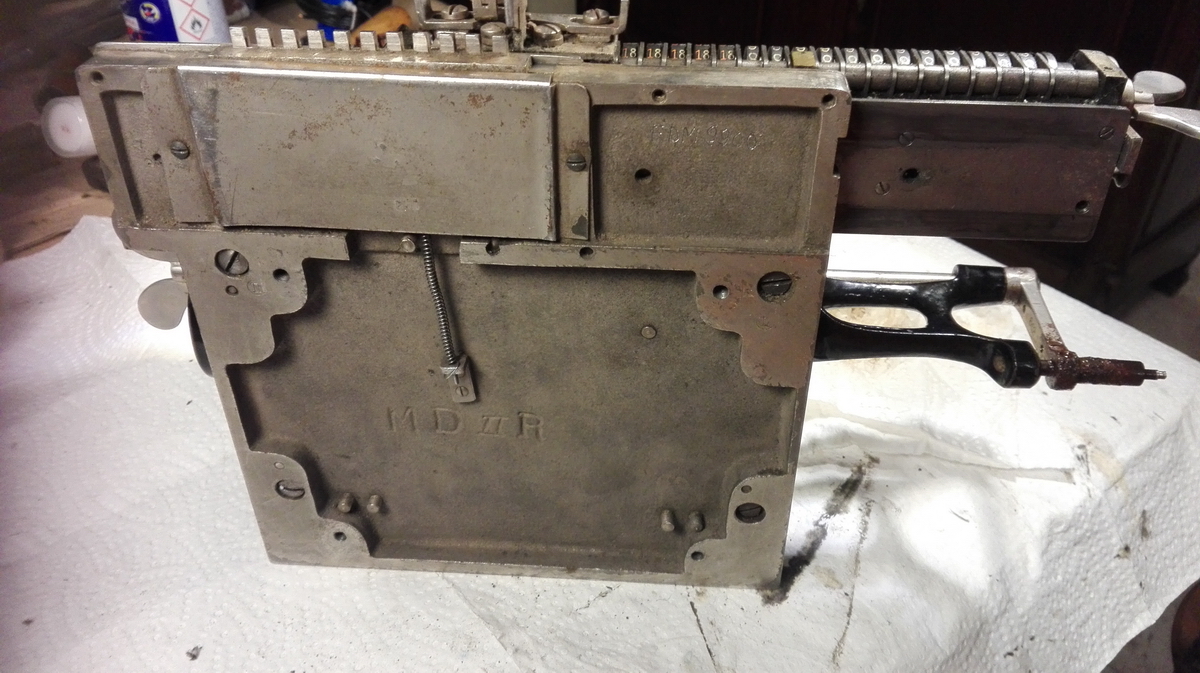
The axle for result register counter wheel locator arms was tapped back into place, as it was hindering the clearing.
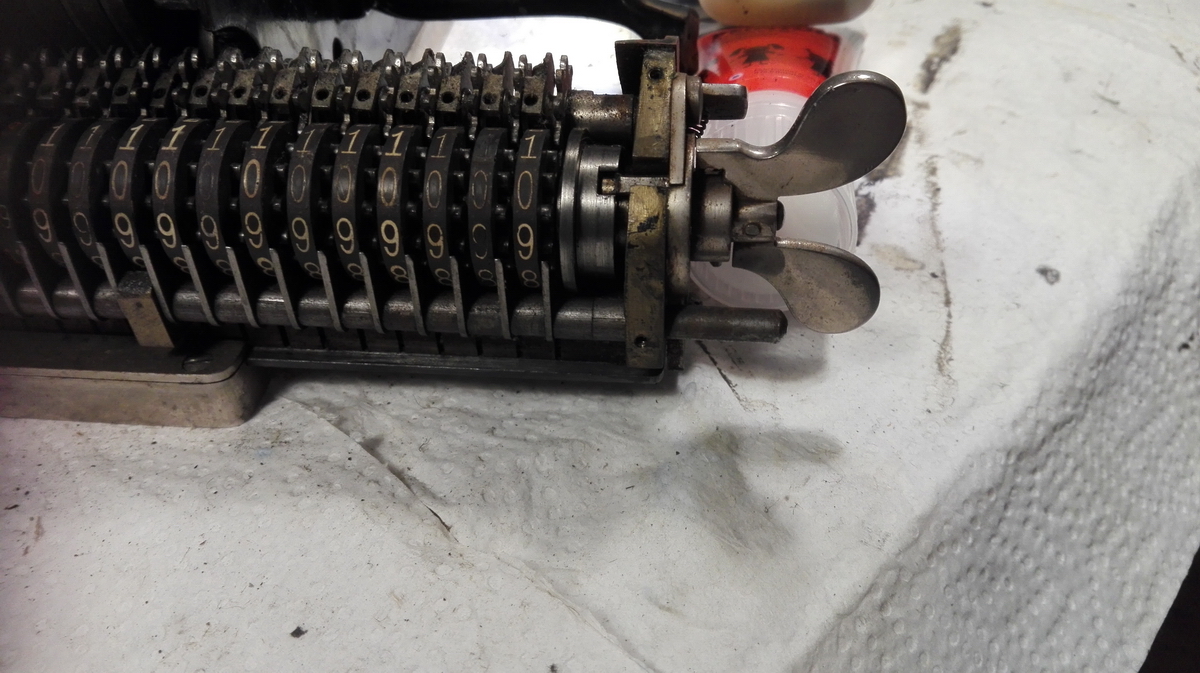
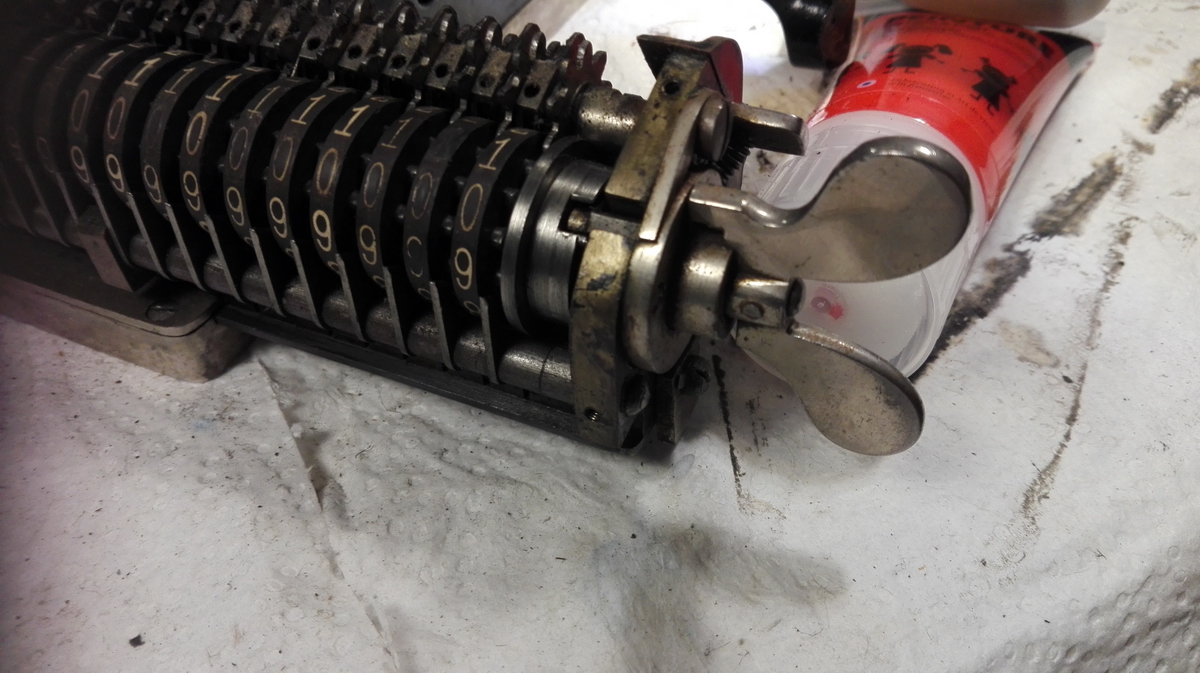
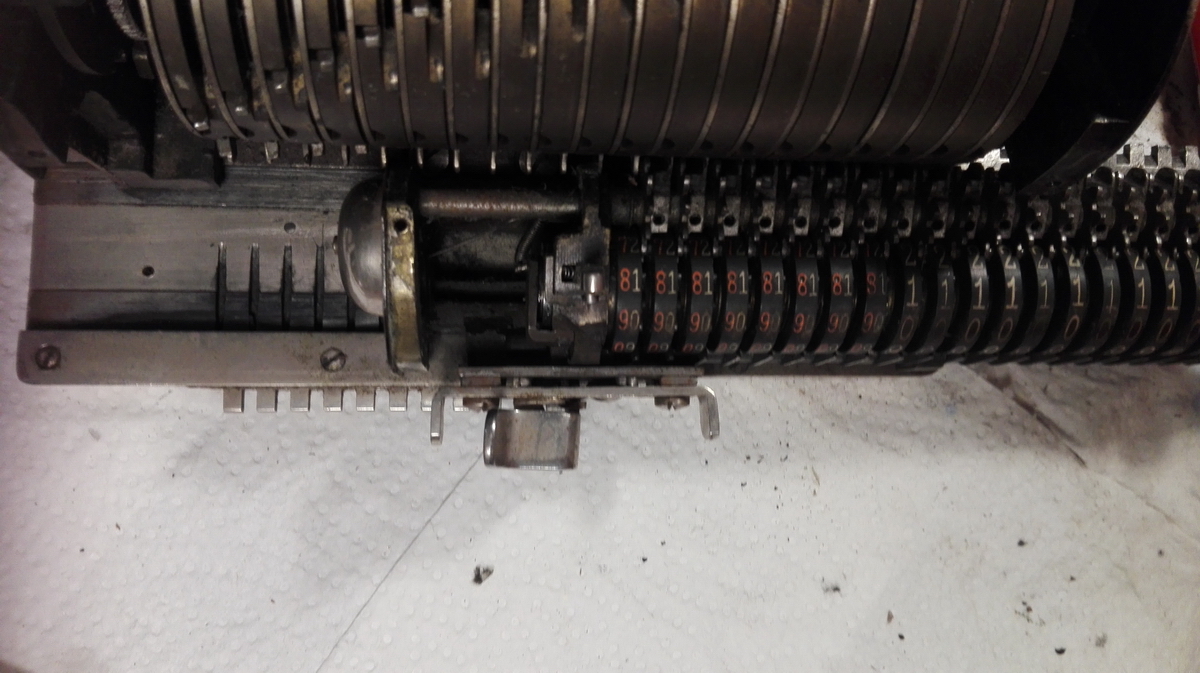
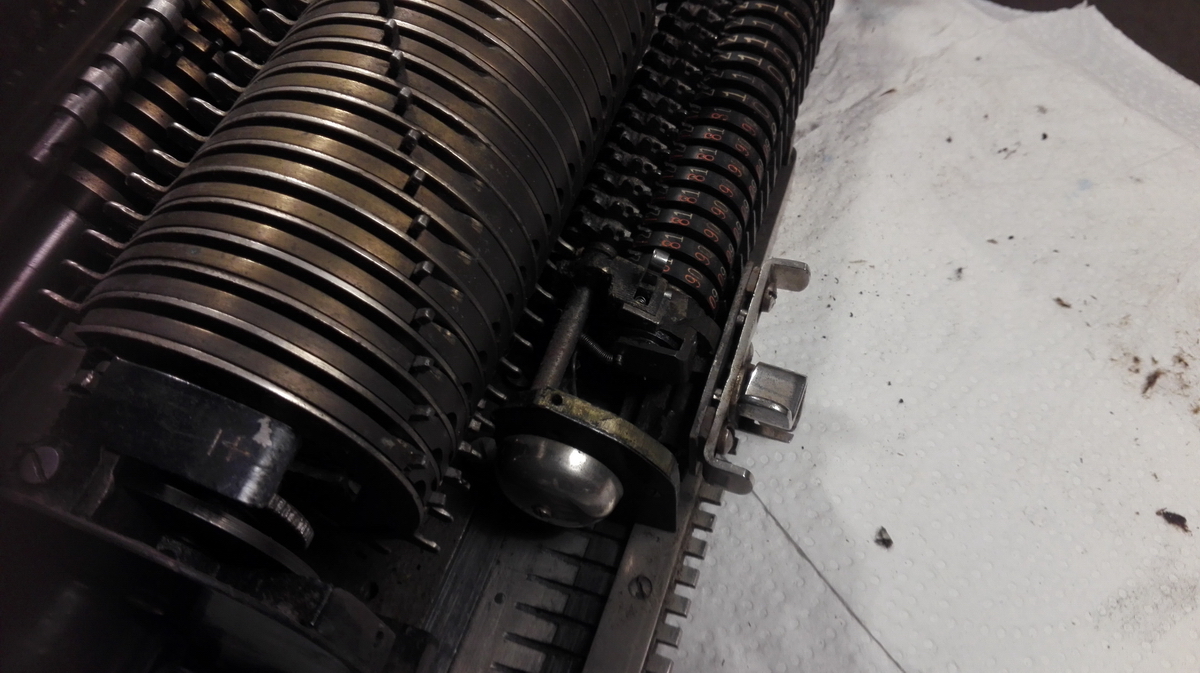
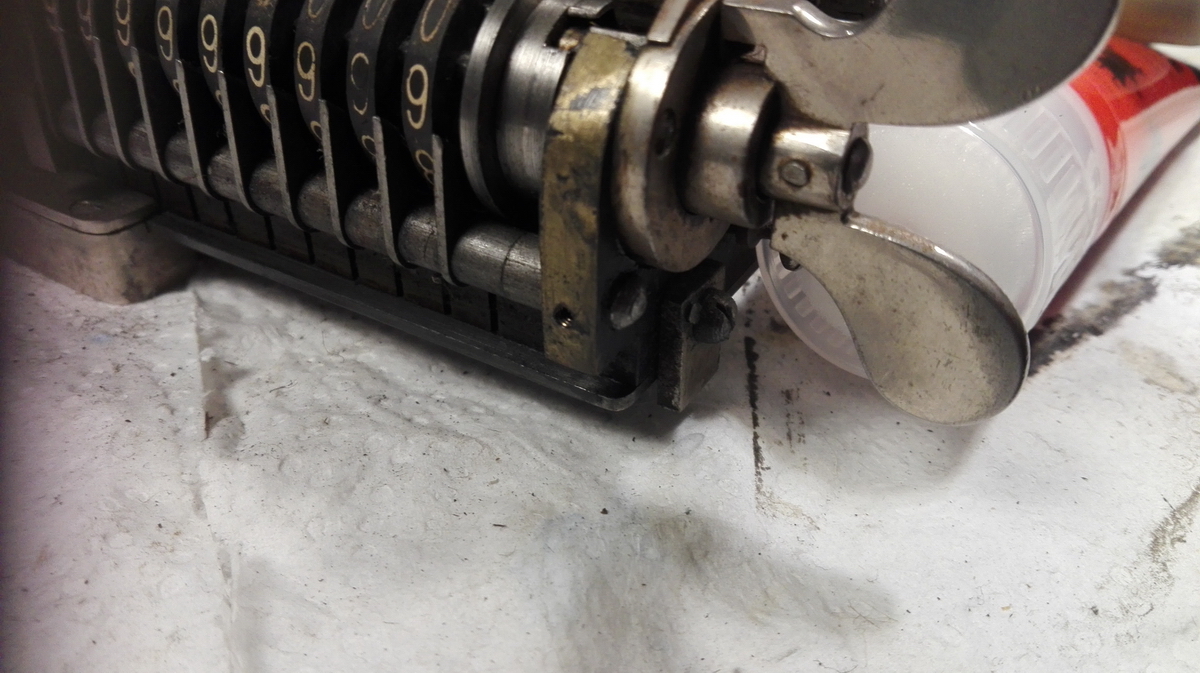
Retaining pin nut for teh crank handle was removed without issue and the handle taken off. Lockings screws came out, and the locking pin was pressed out without too much trouble. I have a strong feeling this is already a replacement part, but it does work. The crank handle itself is cracked and very fragile. I glued it back together, and filled the missing piece in with epoxy (see below). To be used very carefully!
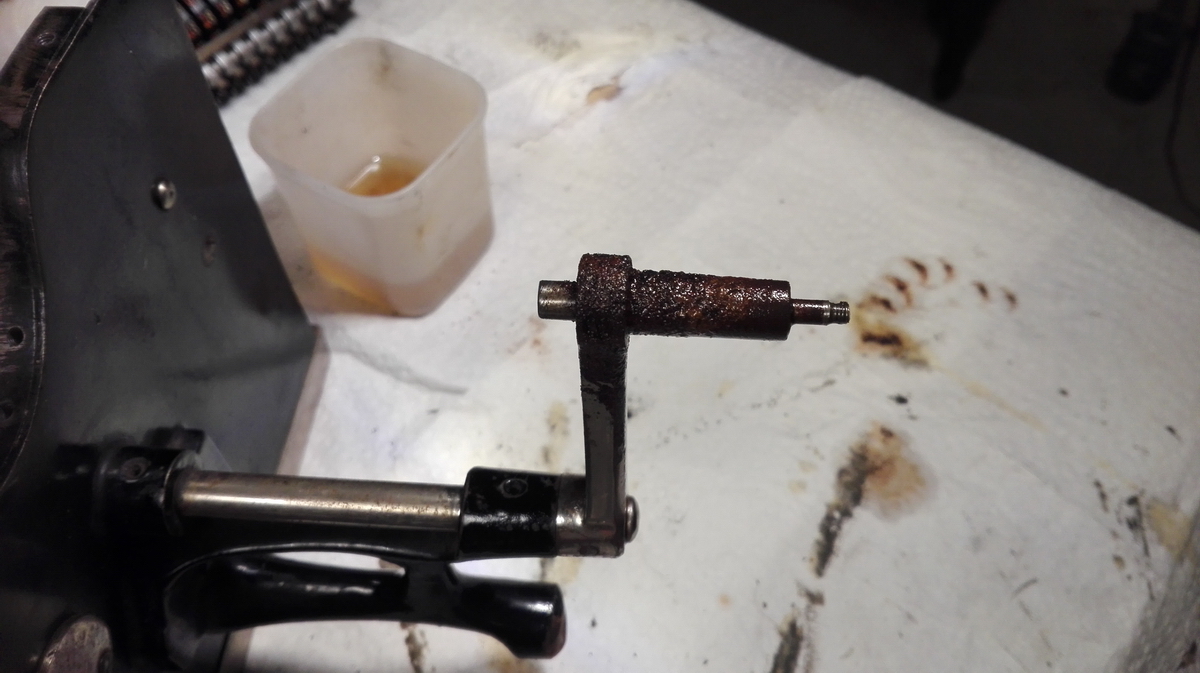
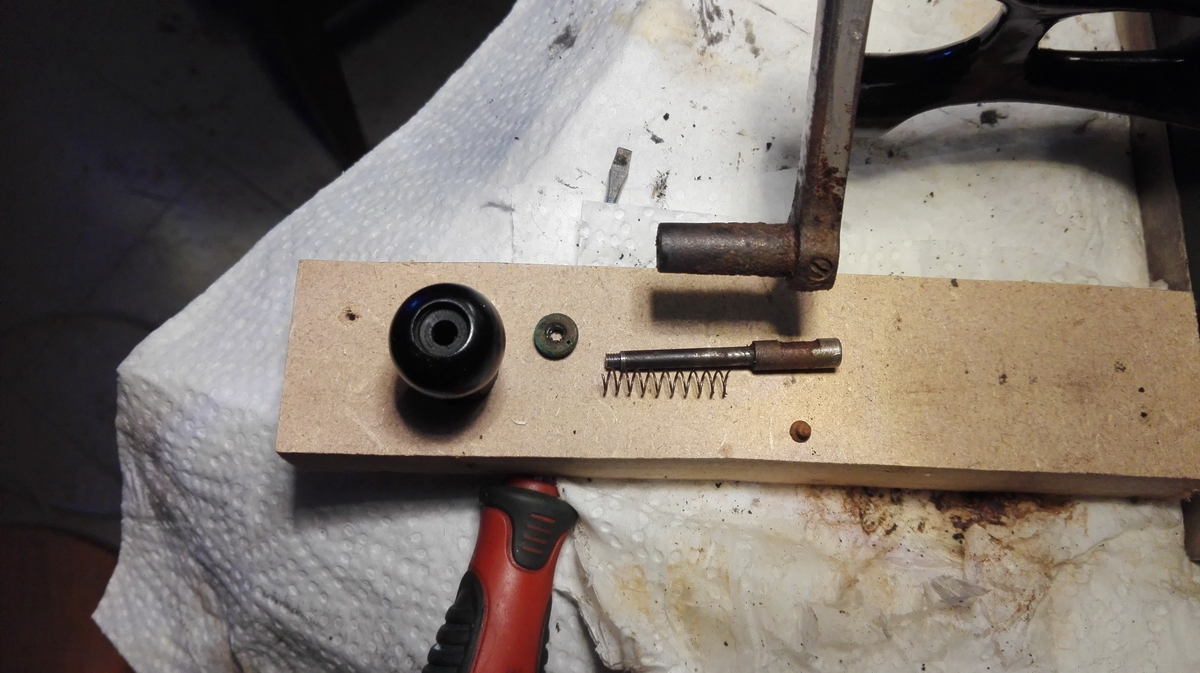
The counter register had issues with no reset for two of the counter wheels. It was taken out, and disassembled.
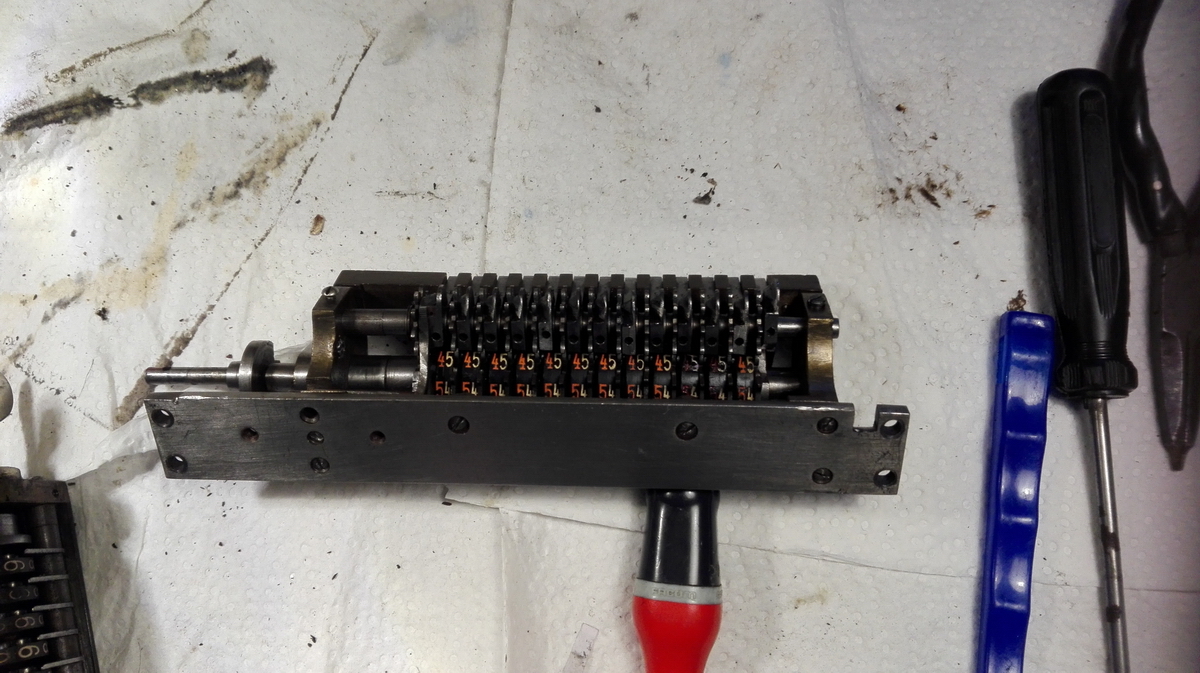
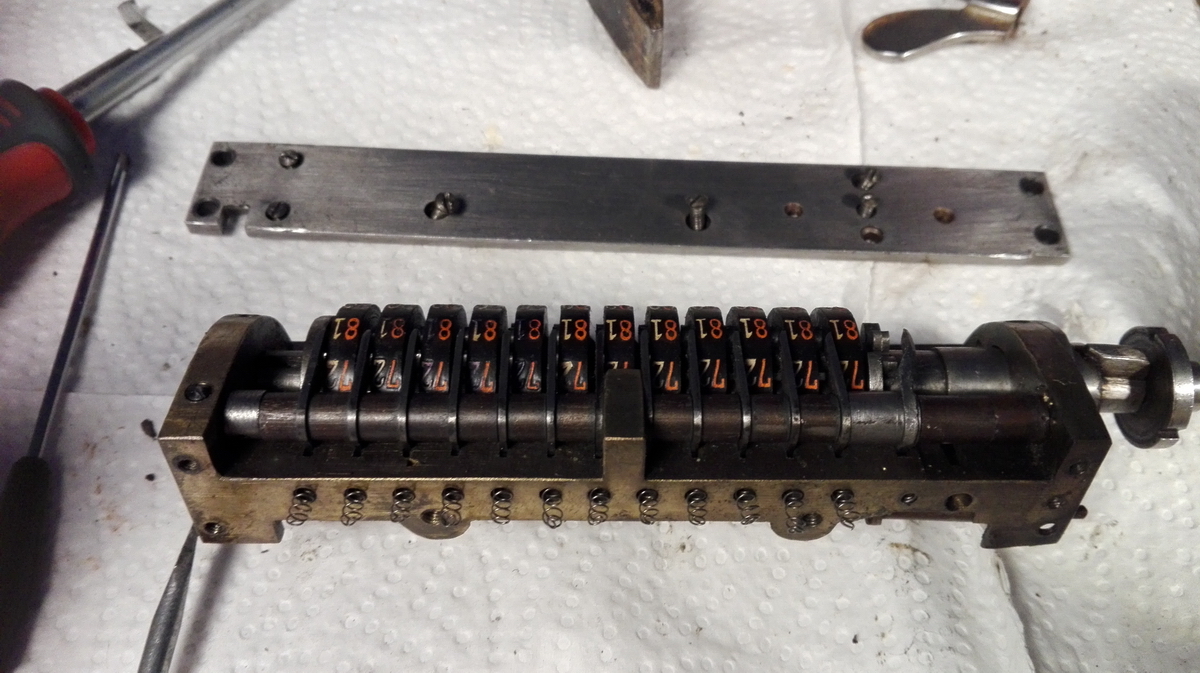
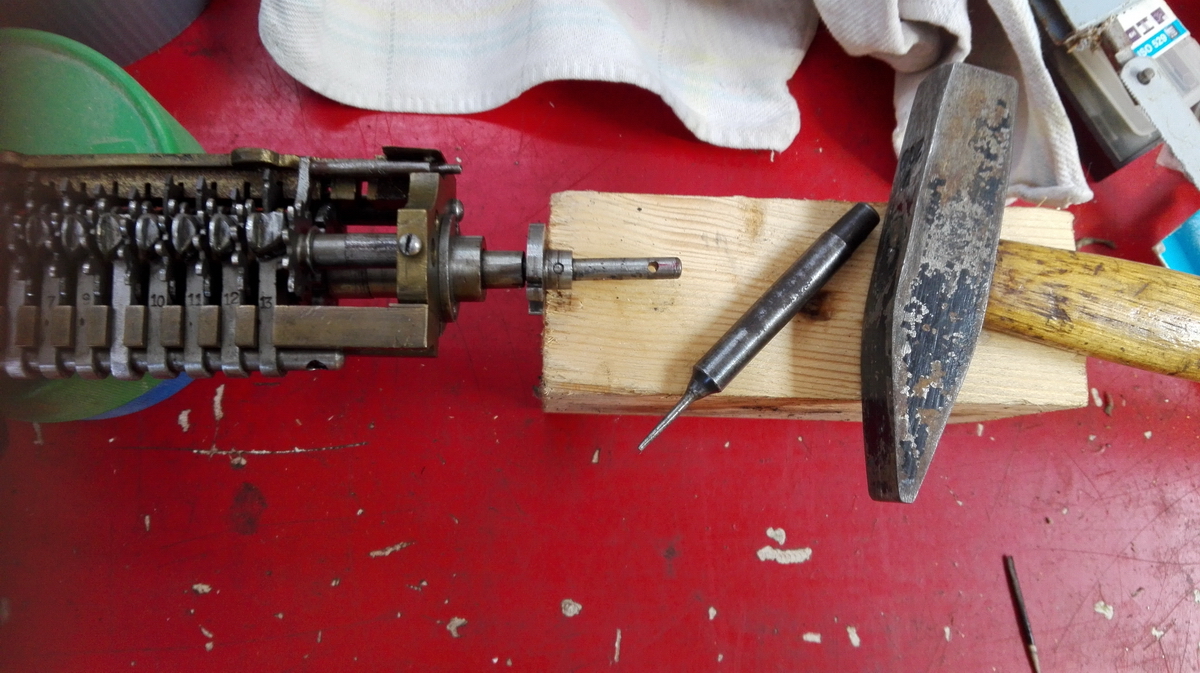
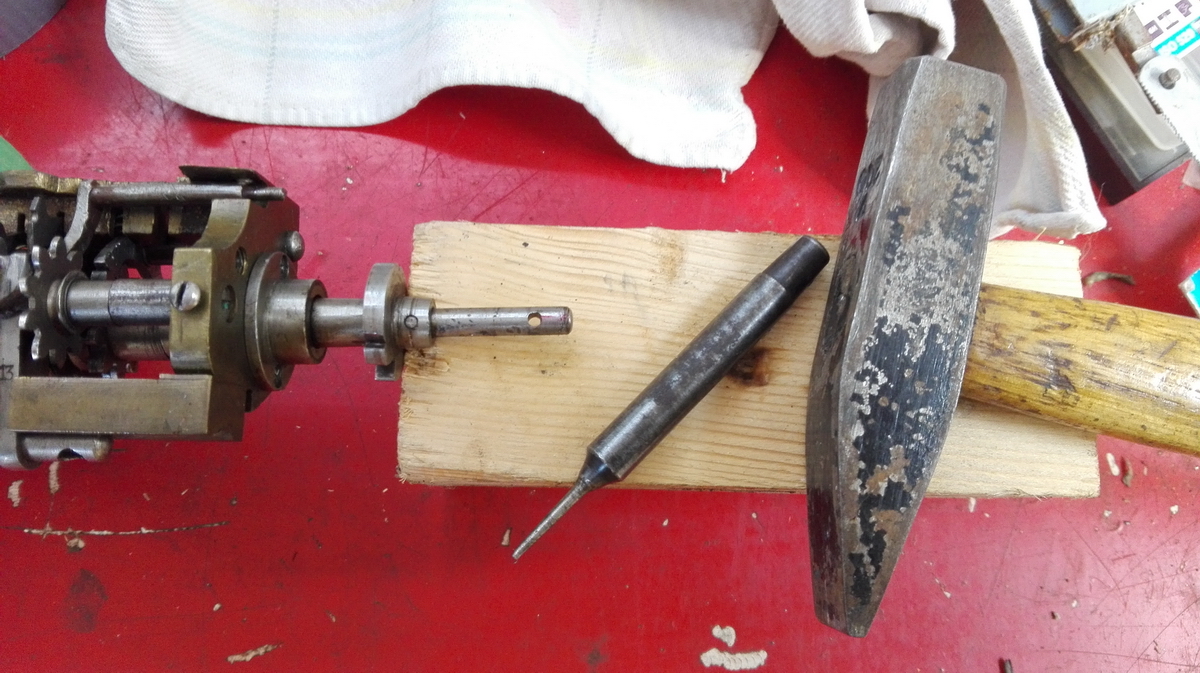
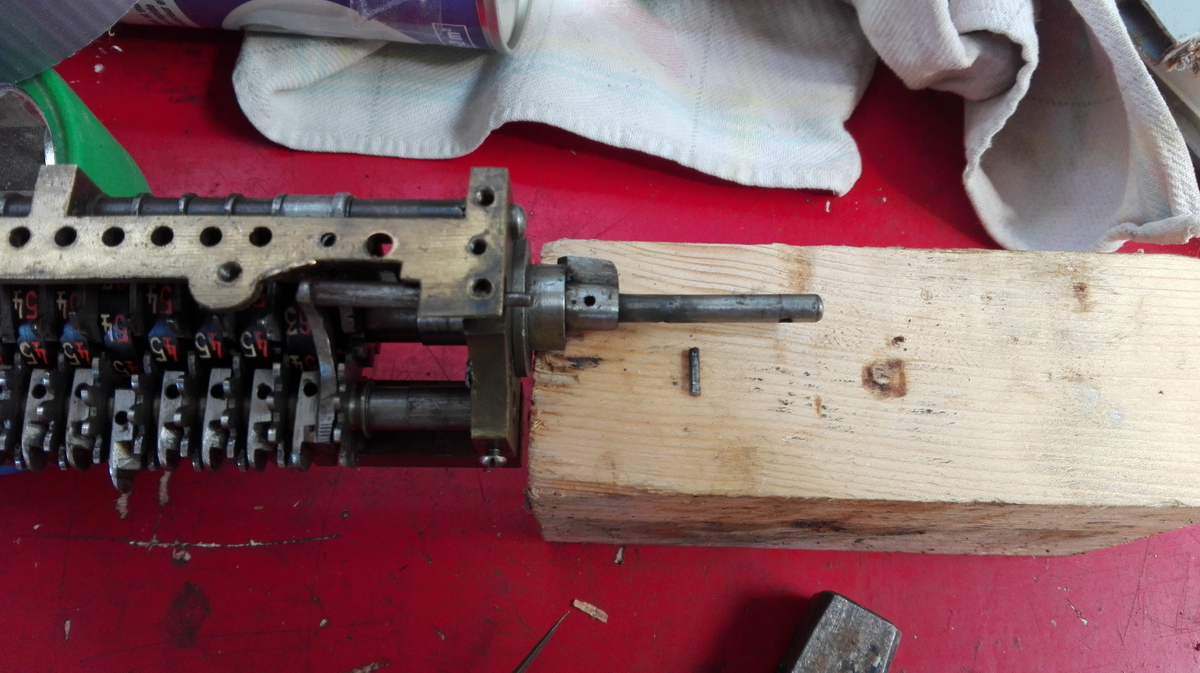
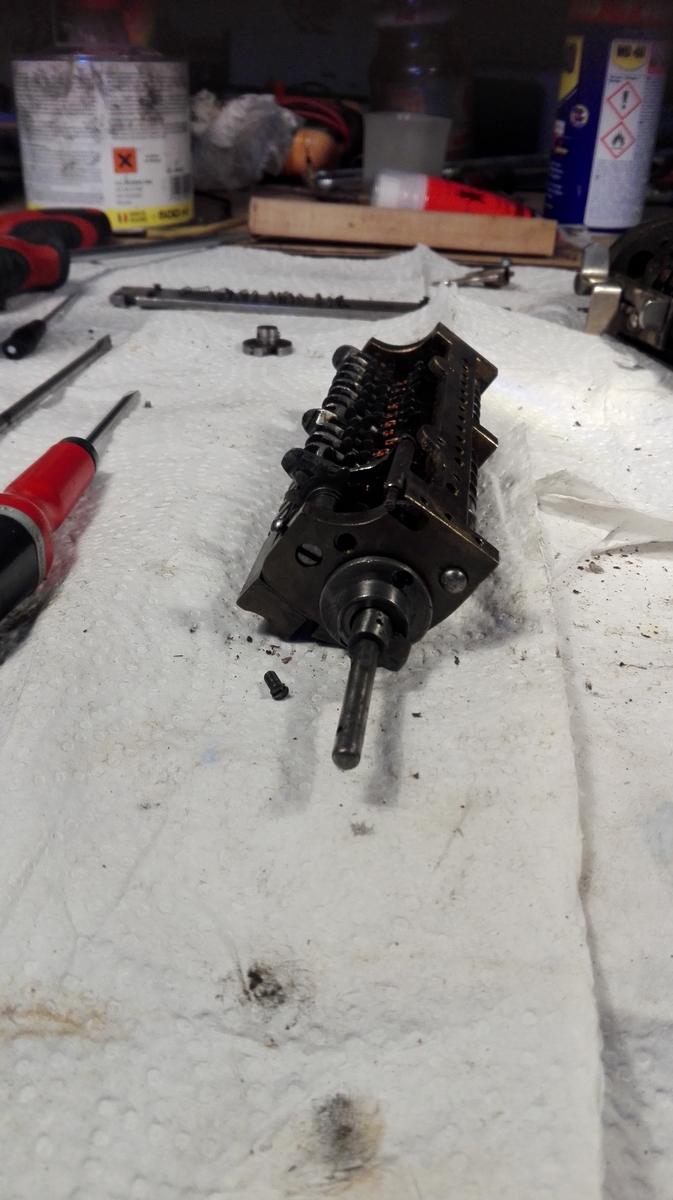
Two of the existing rezeroing teeth were tapped a little higher in order for them to engage properly with the counter wheels.
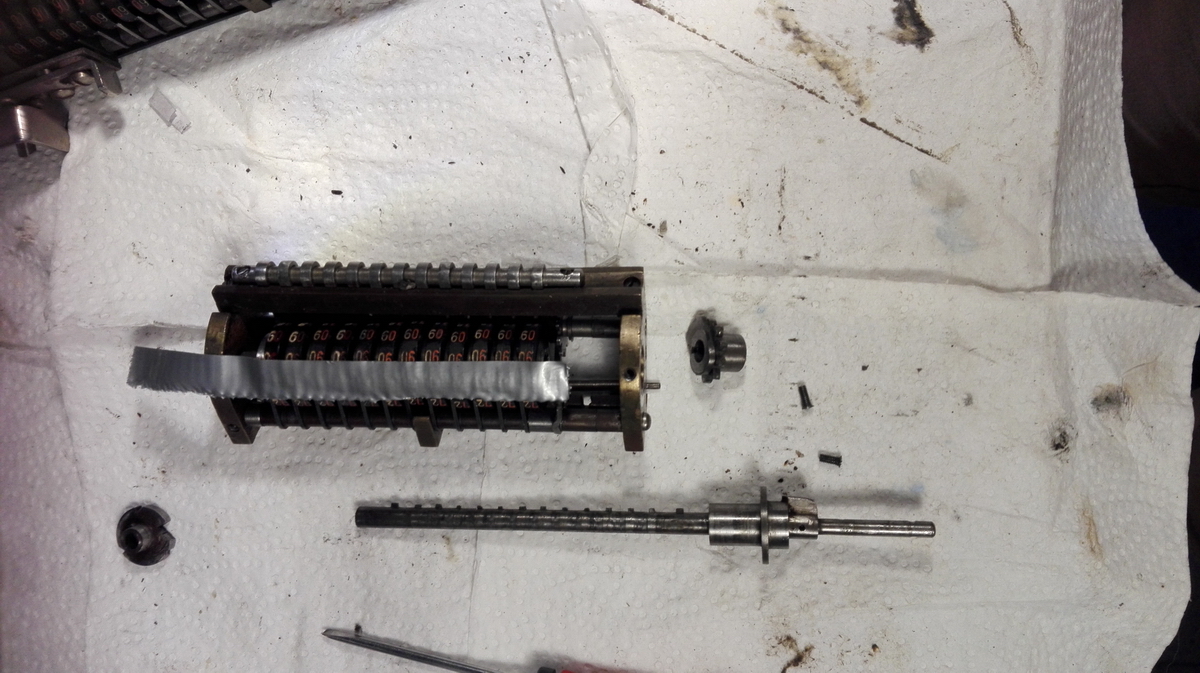
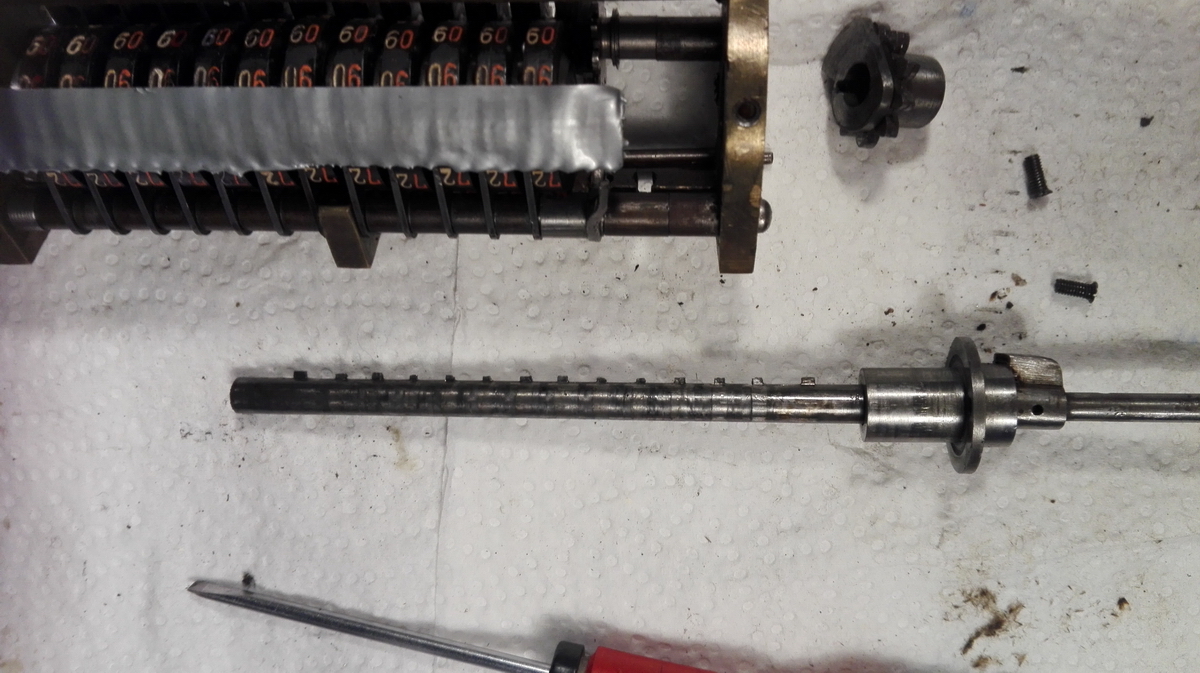
The red on the counter numeral wheels which was repainted too dark was redone in a lighter colour, and the counter numeral wheels cleaned.
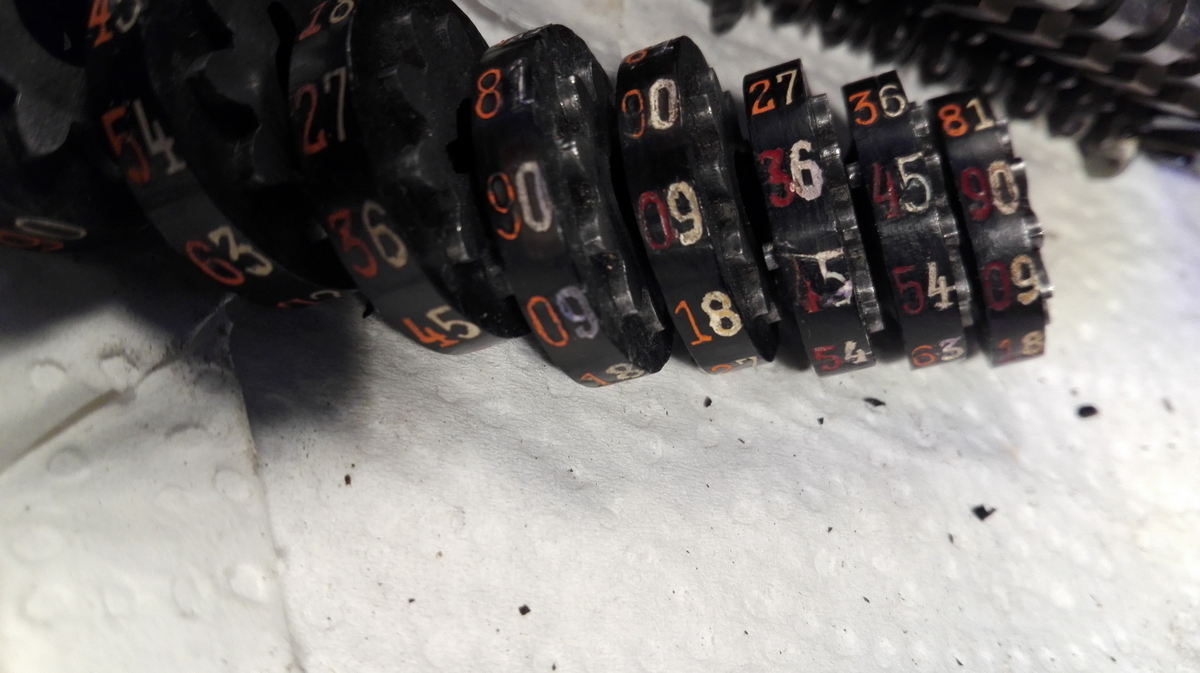
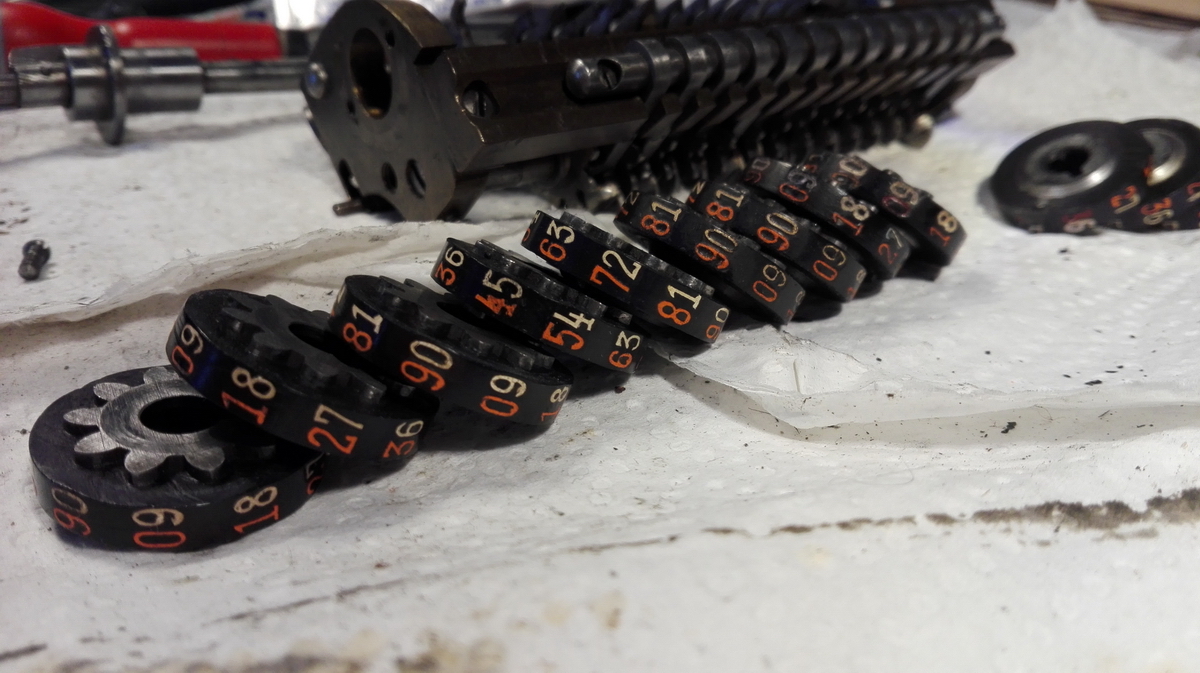
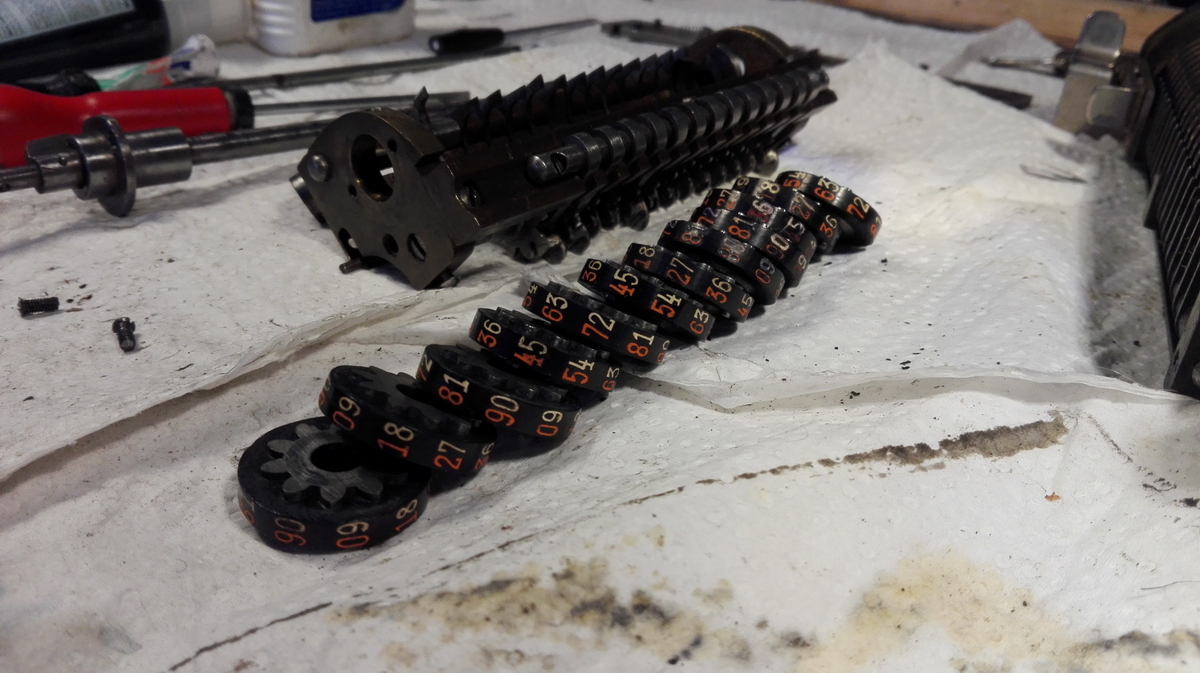
Tabulator parts and all other nickel parts on the carriage were polished
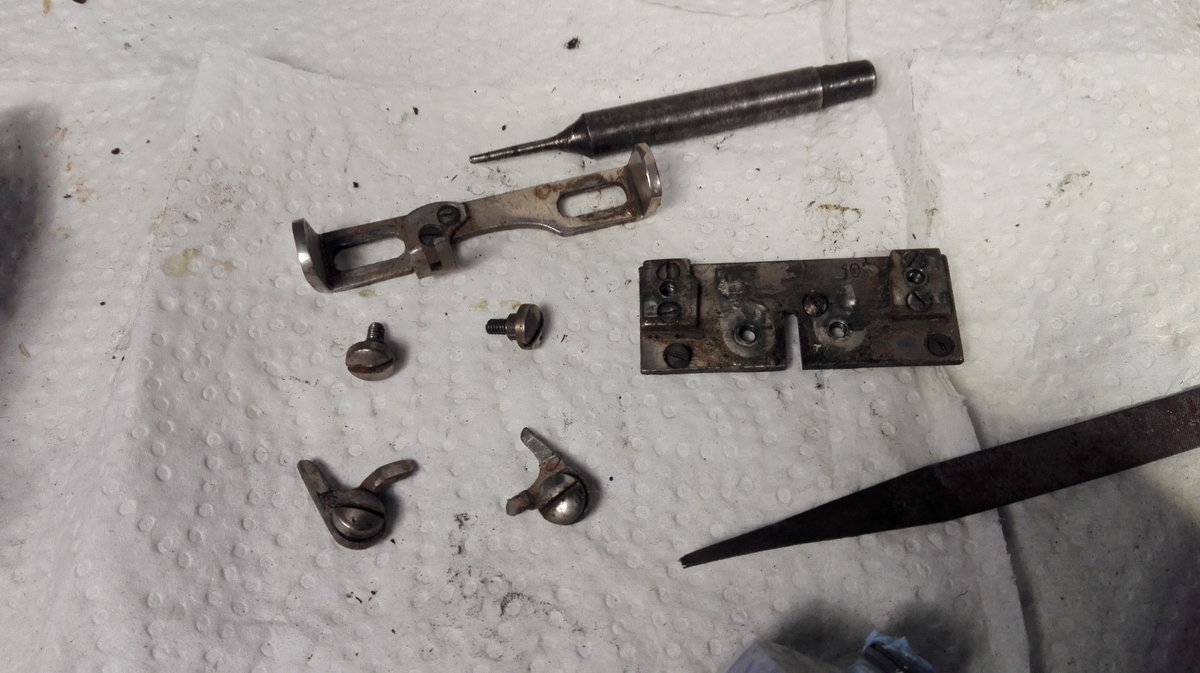
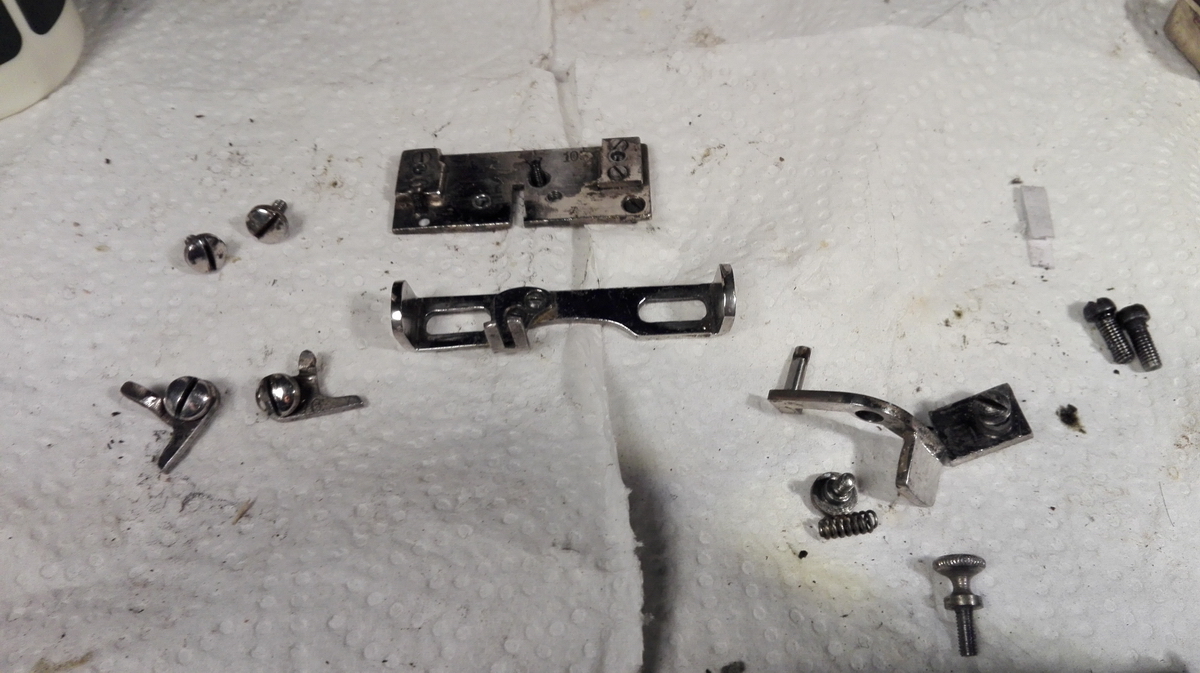
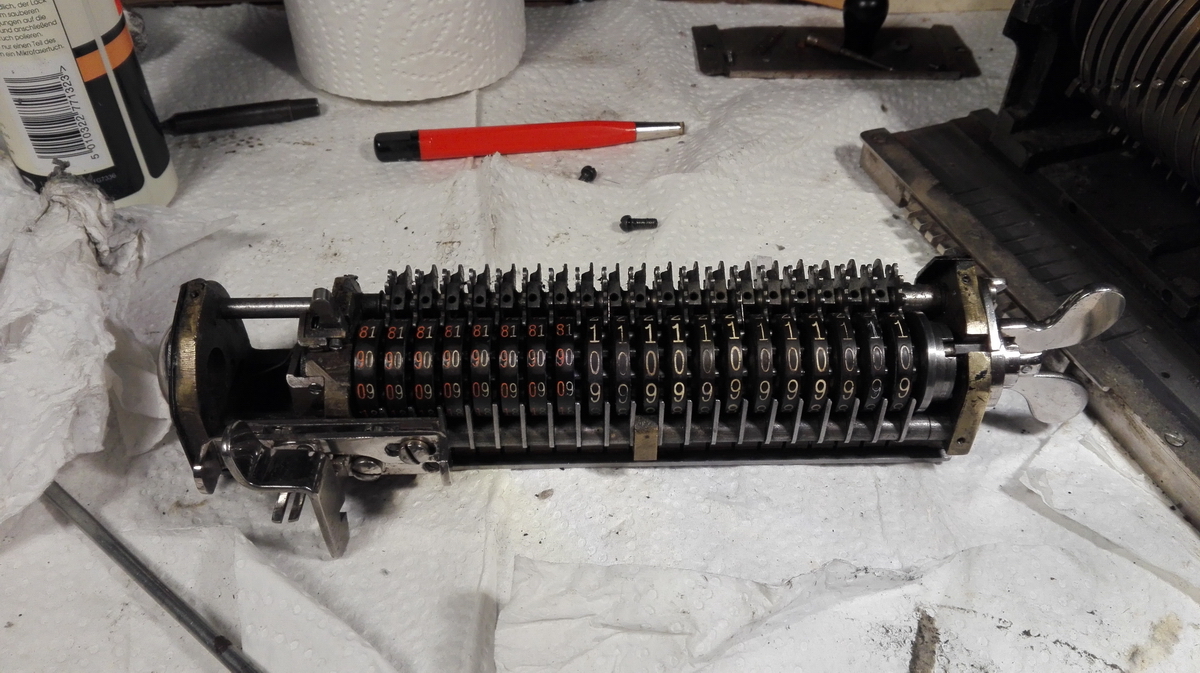
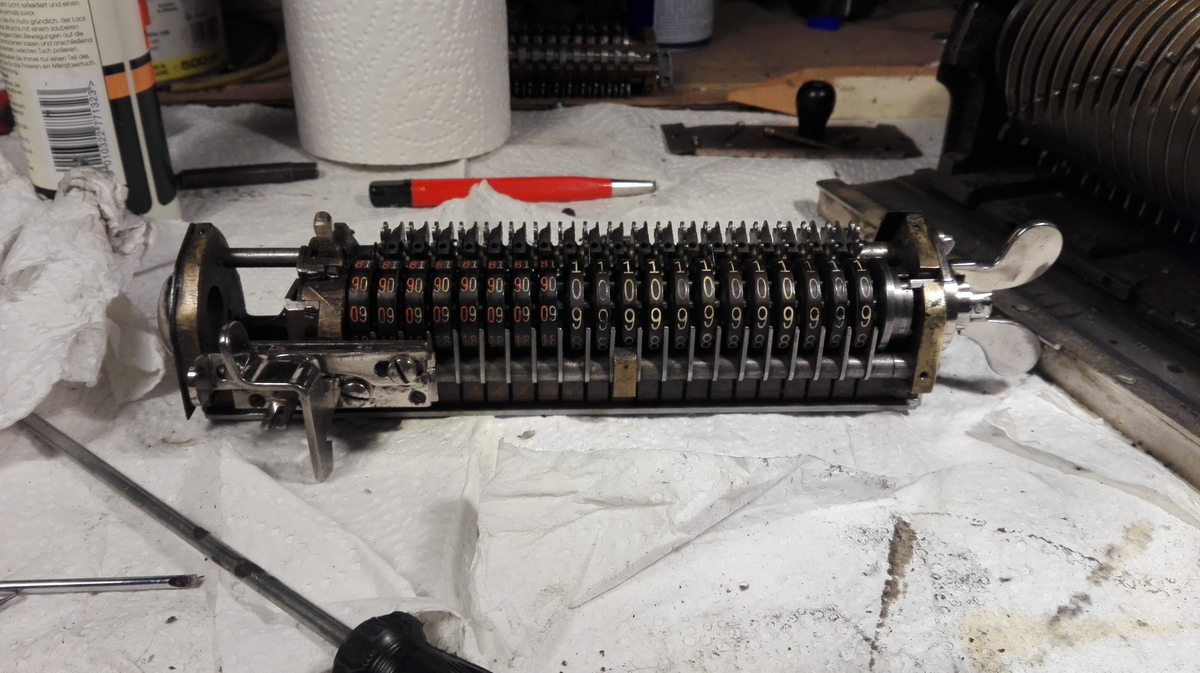
The rest of the machine was polished and reassembled.
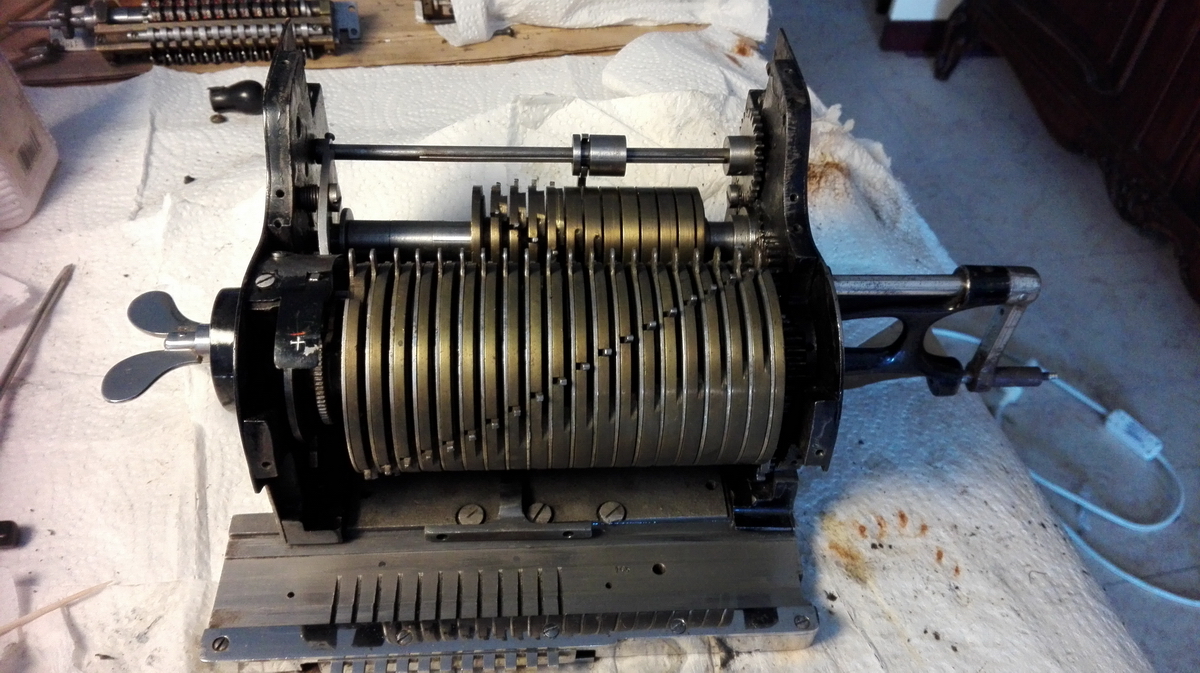
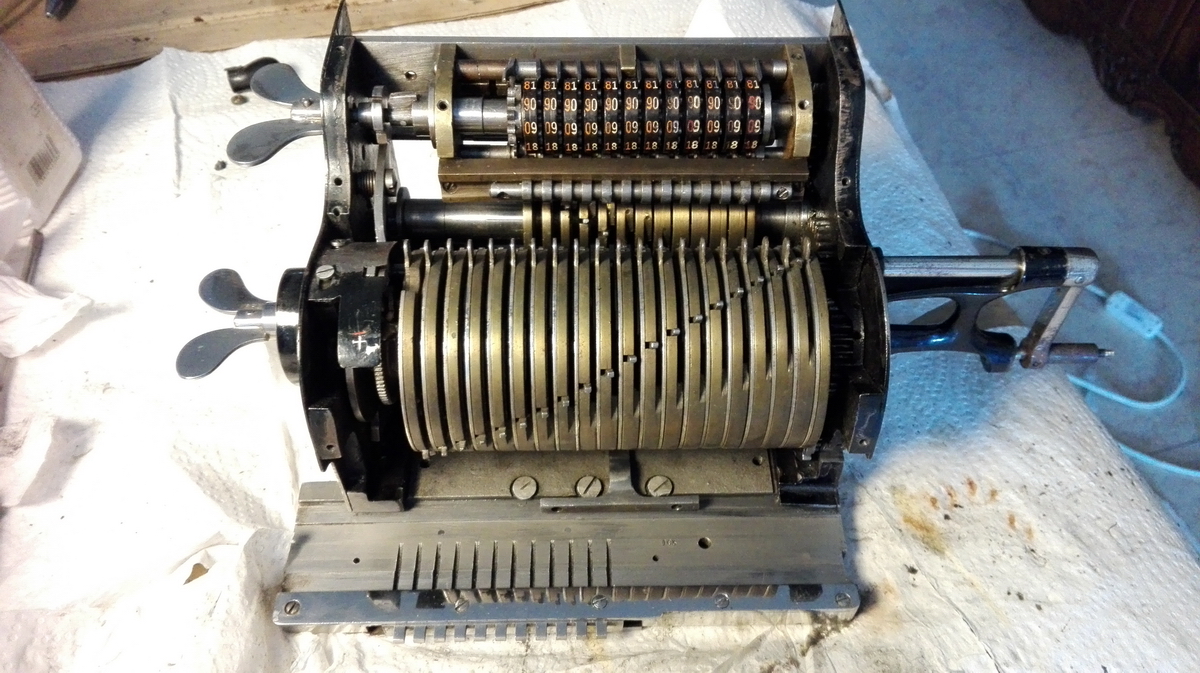
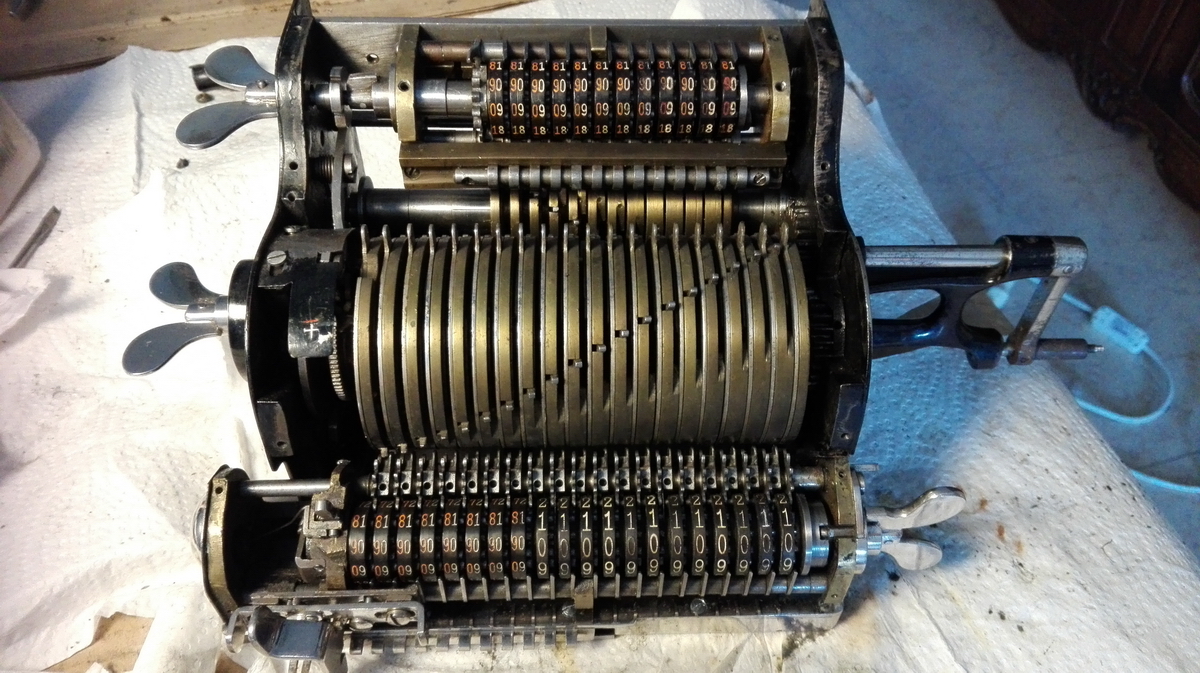
The counter register moveable blind didn't move, so I looked into why that was. It turned out that the spring was missing (replaced) and the tab that holds it in its current position was also broken off. I made a replacement part for it that works - even though it is not the prettiest. It may originally have been a round pin, but this works fine.
That concludes the technical restoration.
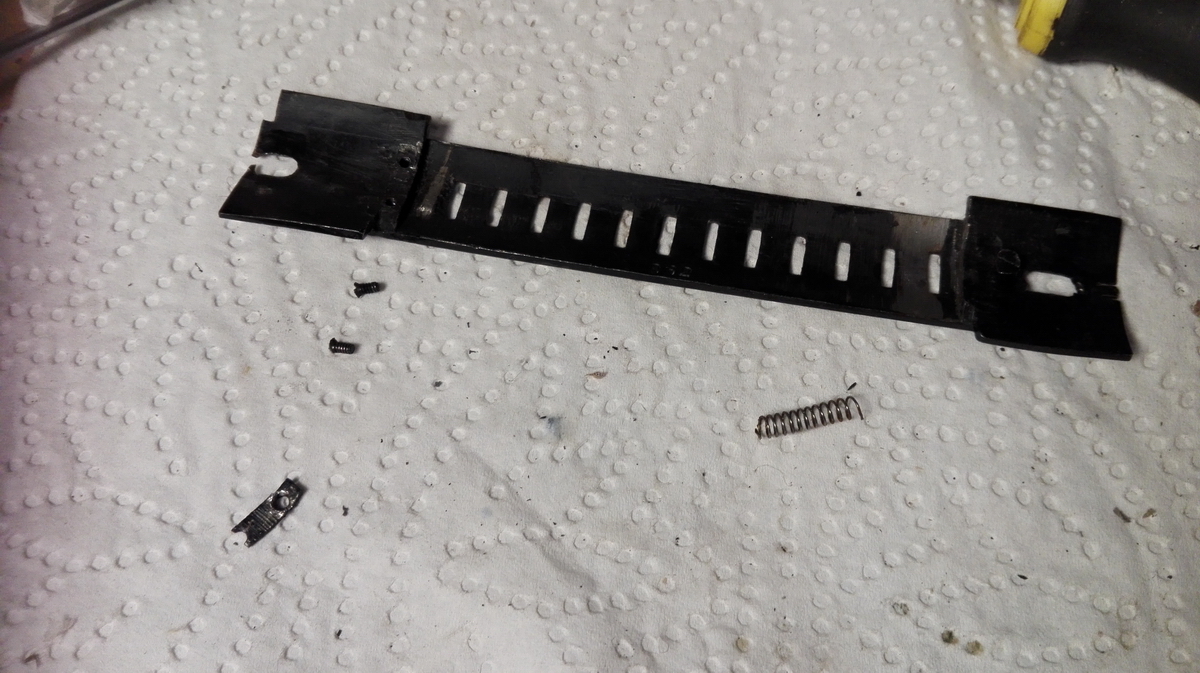
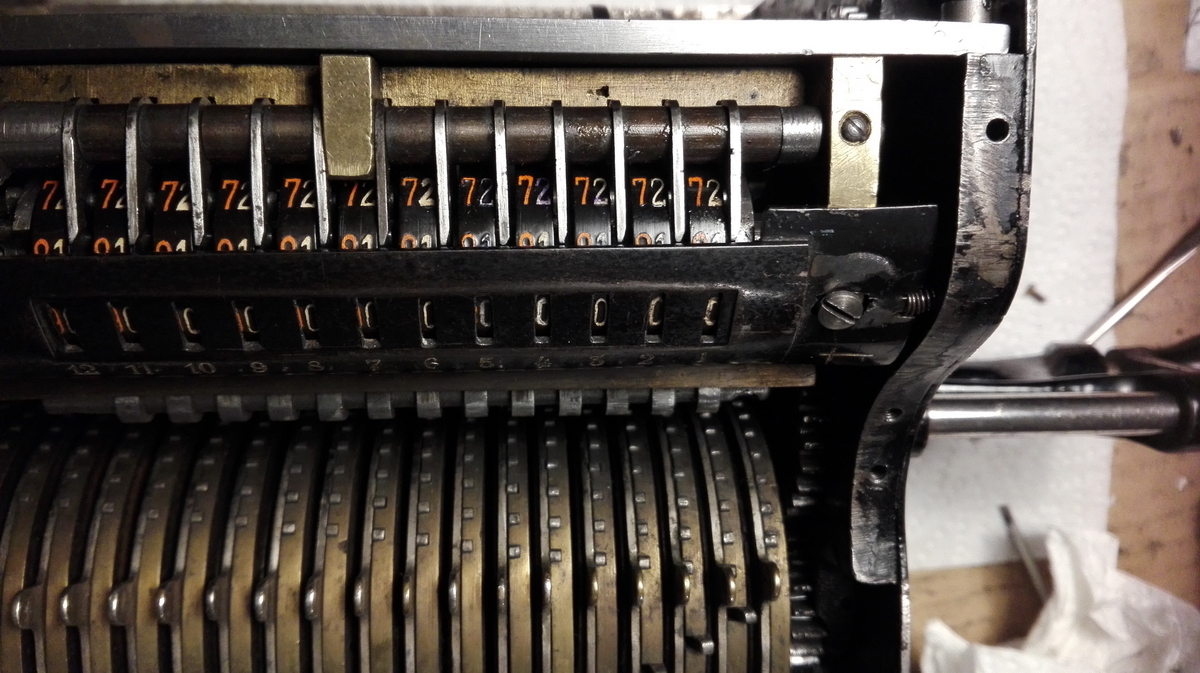
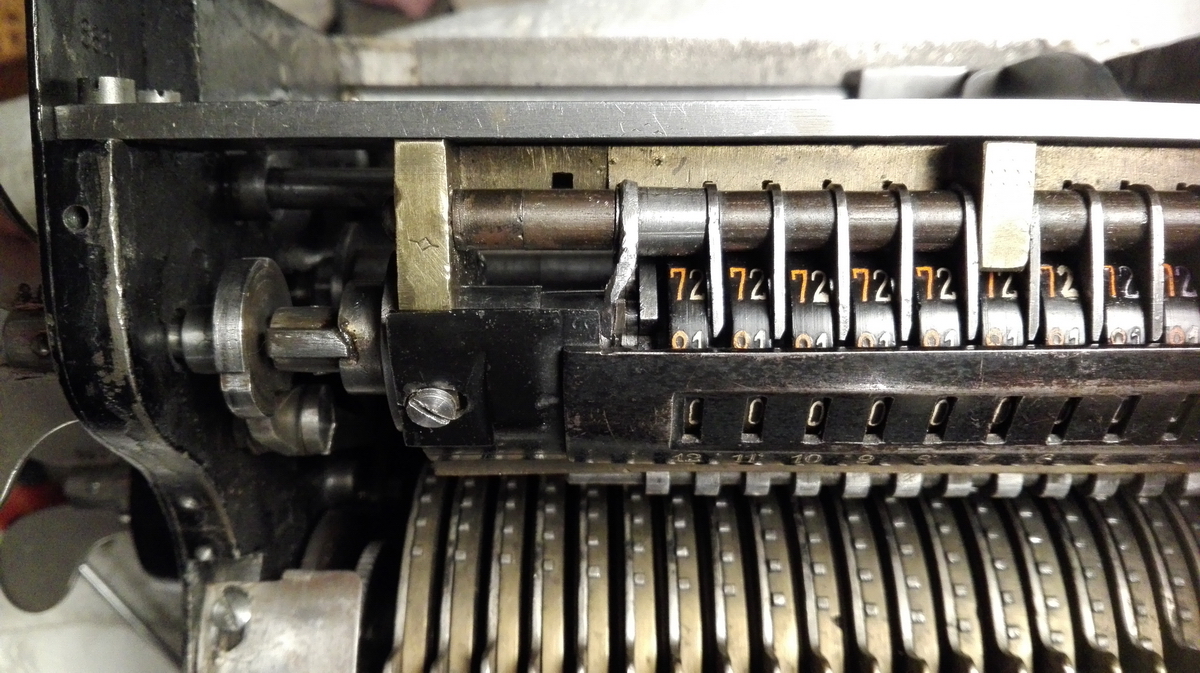
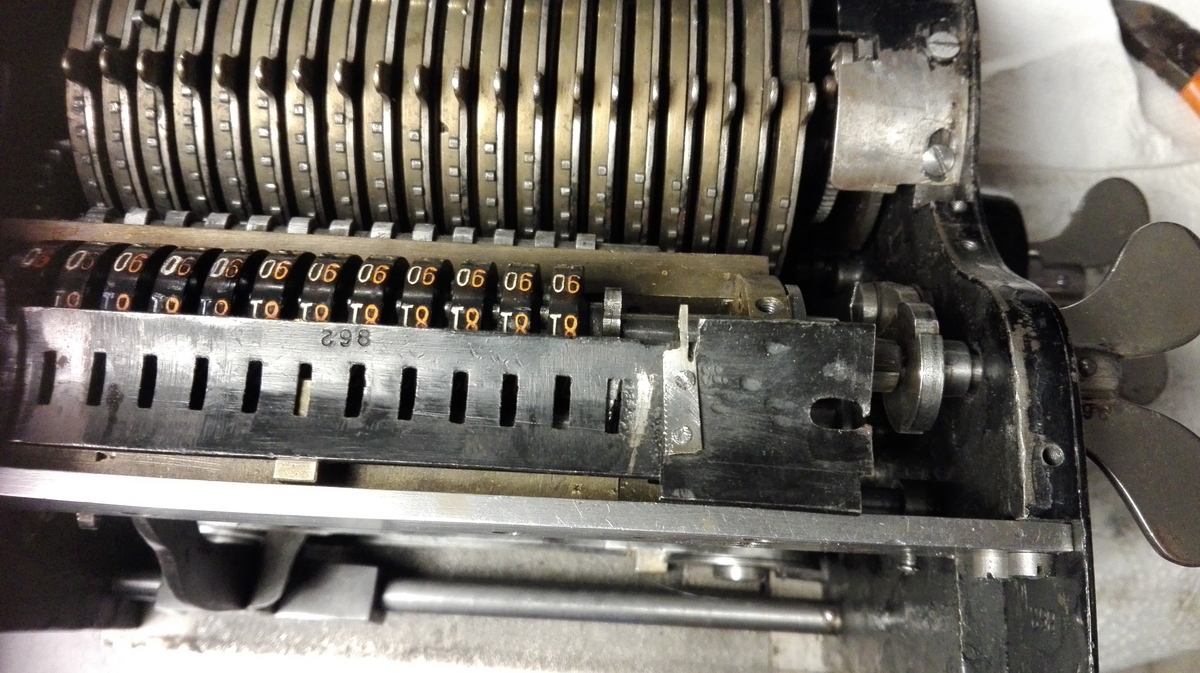
These are the covers, which were also polished up as well as possible - to give an impression of what the machine would look like when back together (comma slider bars missing)
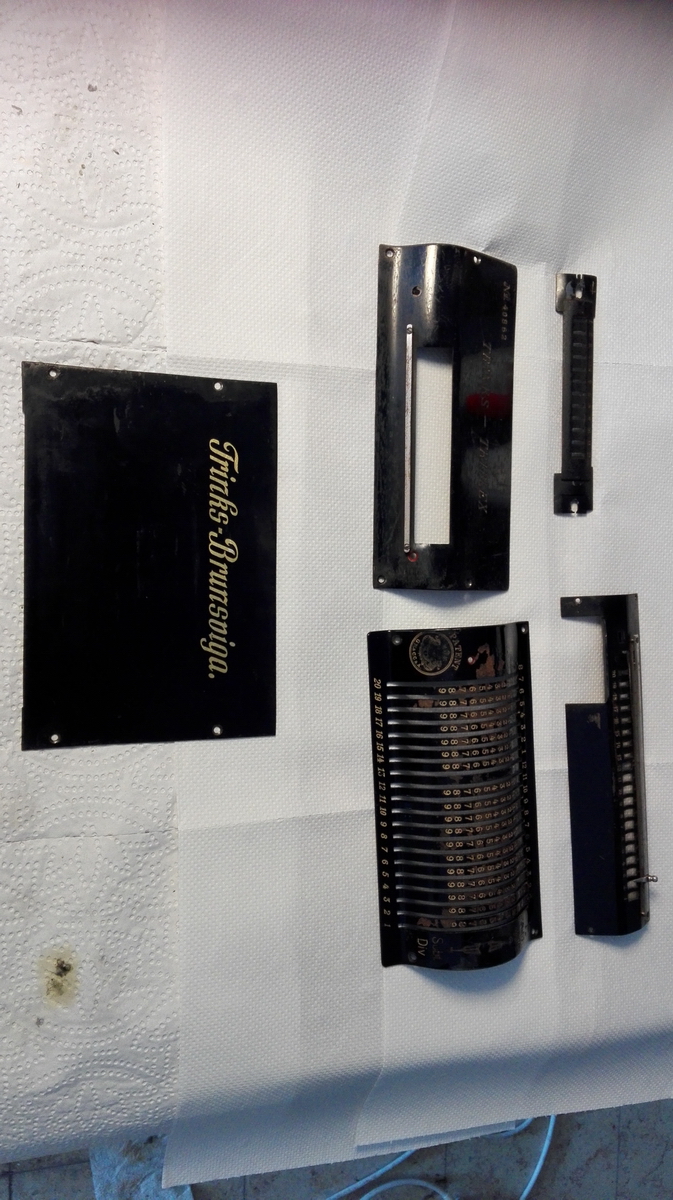
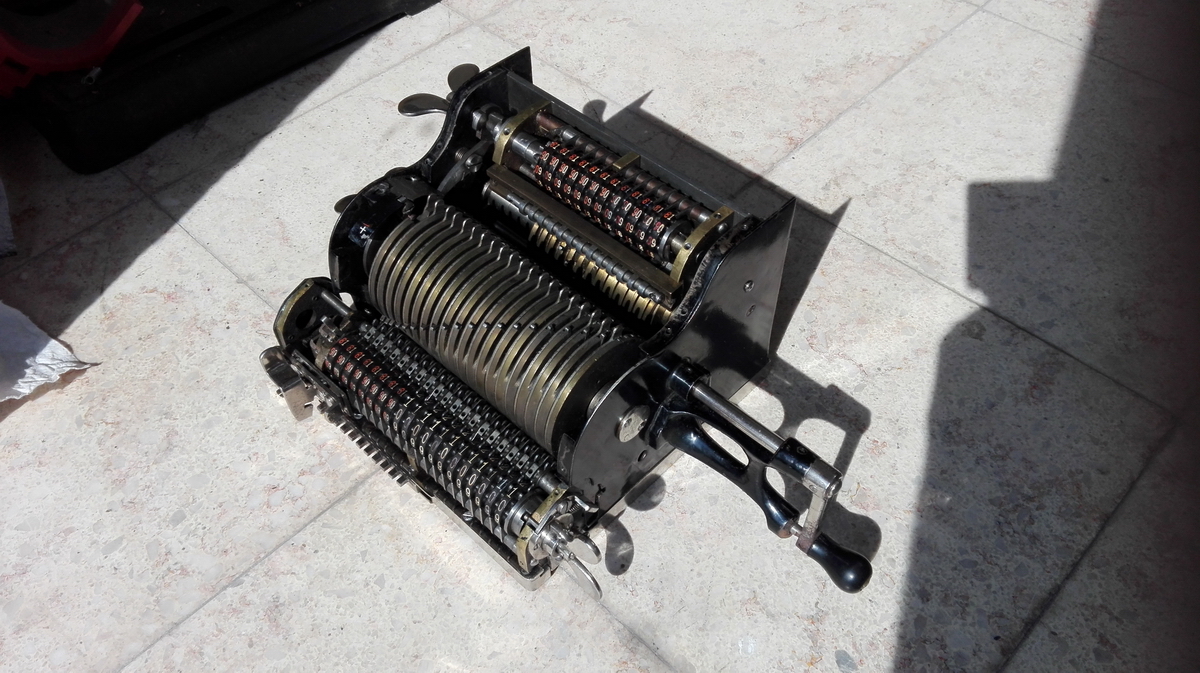
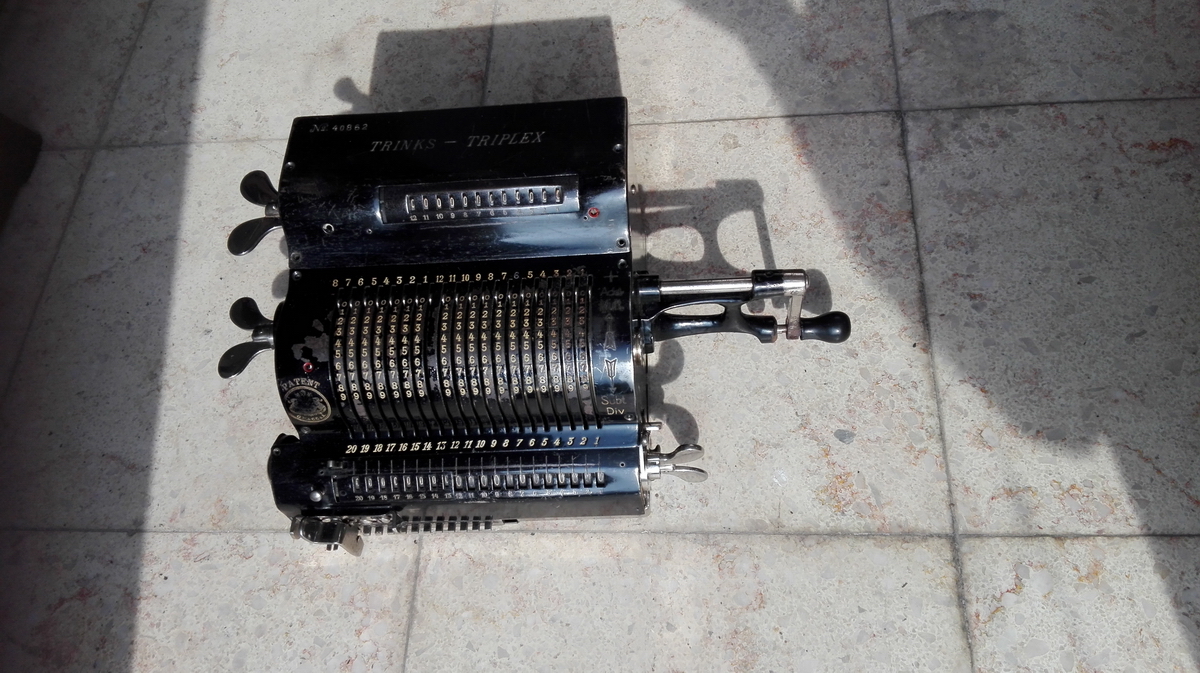
It was decided to try and save as much of the original paint as possible, so the top cover and carriage cover were kept as they were, and just the input cover was partially repainted. This is what we started with. Lots of paint loss, and lots of bubbling under the paint from surface rust.
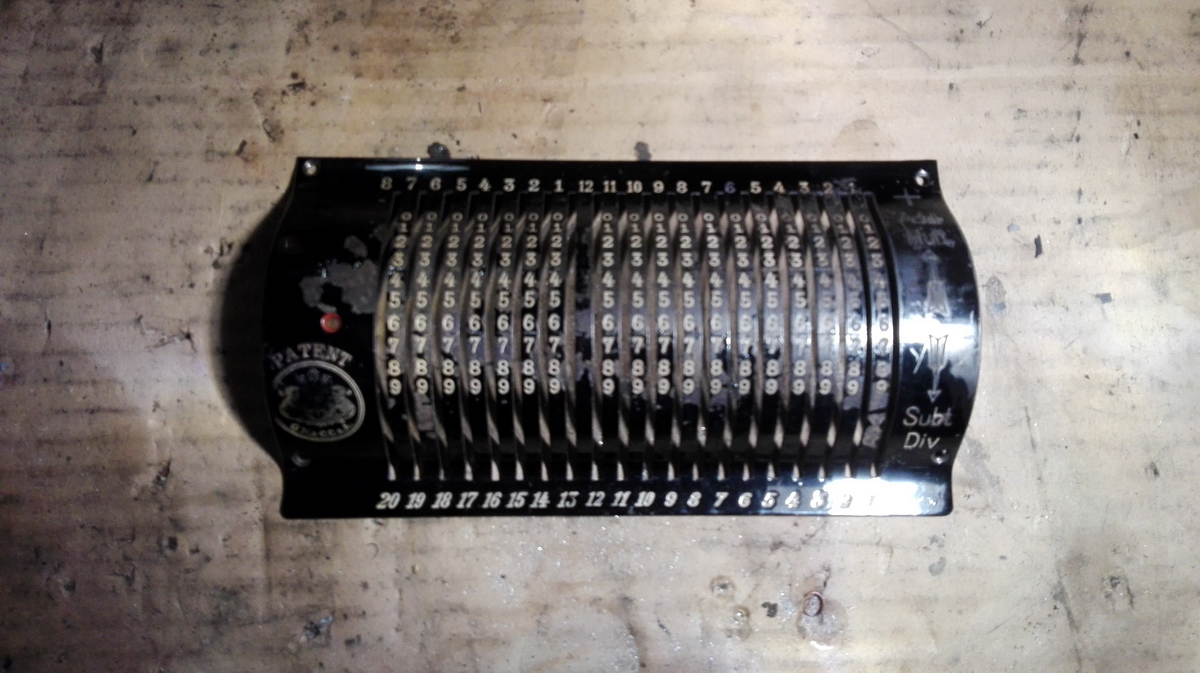
This is after wirebrushing that lot off, to reveal what part of the paint could be salvageable
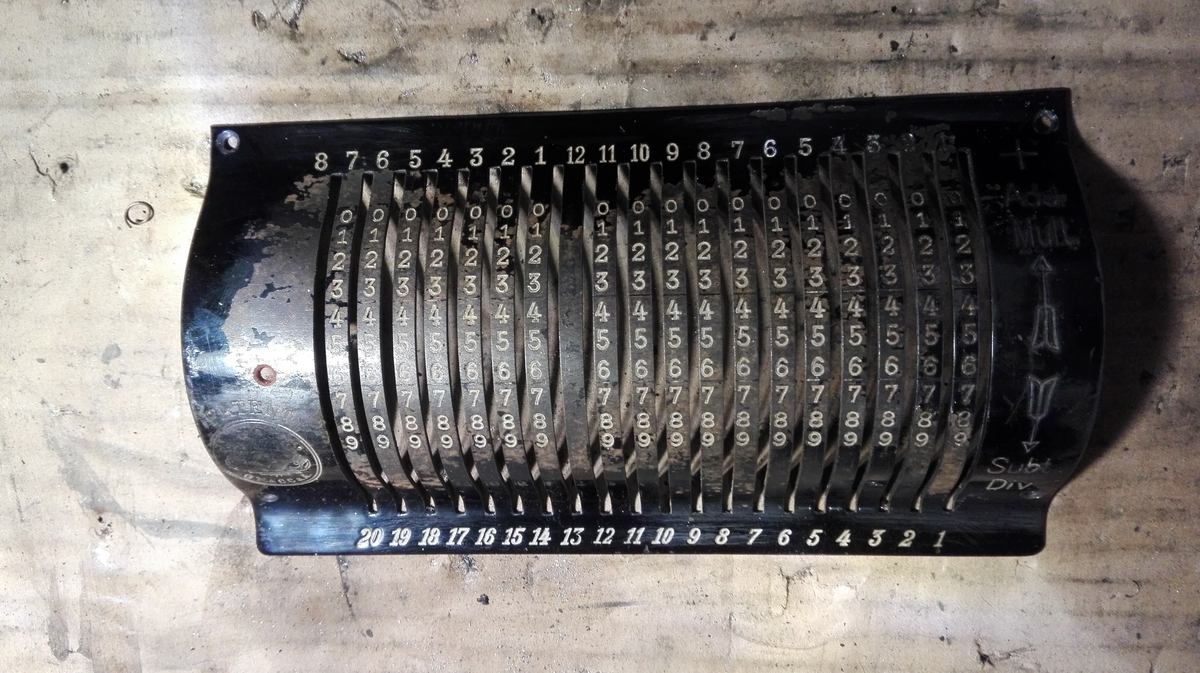
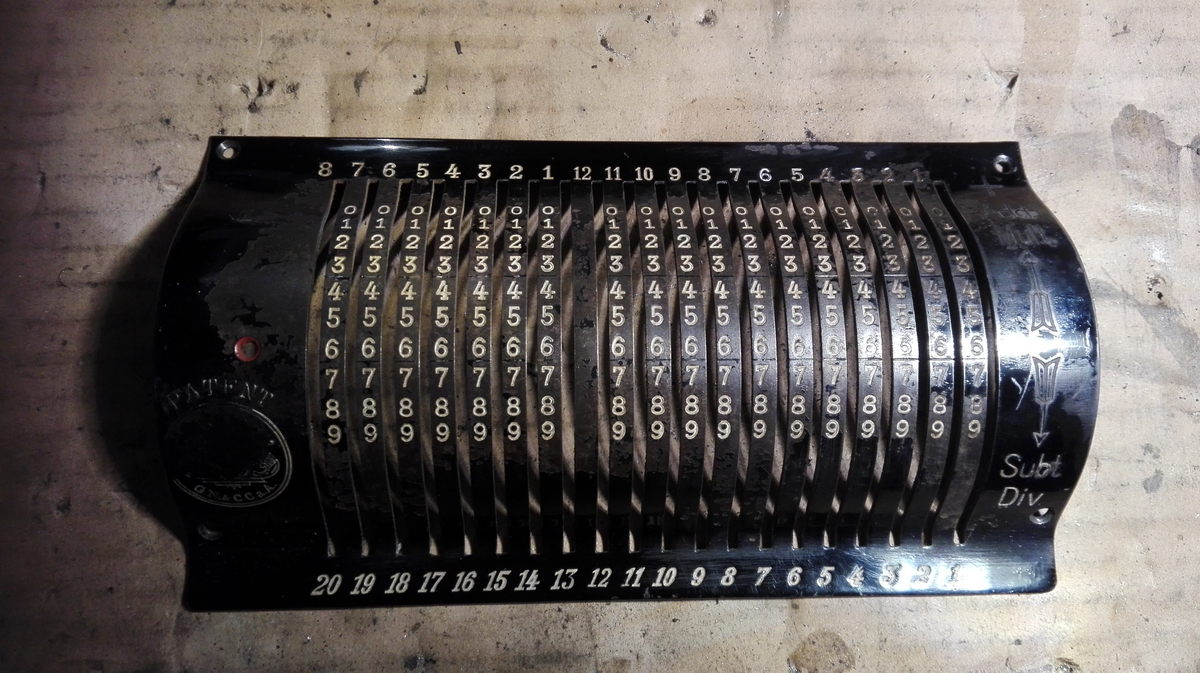
It turns out the bottom row of inlaid numbers, the bottom third of the logo and the middle of the top row of numbers still had good paint. We will try to save that part. So then begins the laborious process of scratching the white paste out of all the input rows, and any other part of the stamping that needs to be painted.
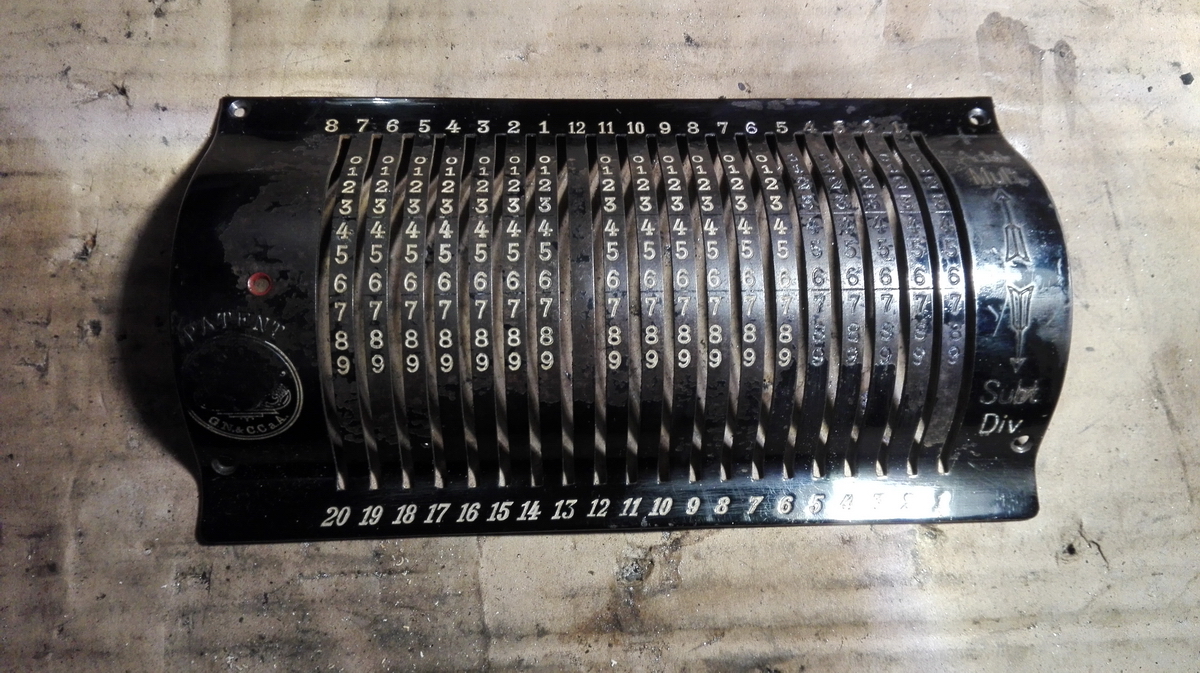
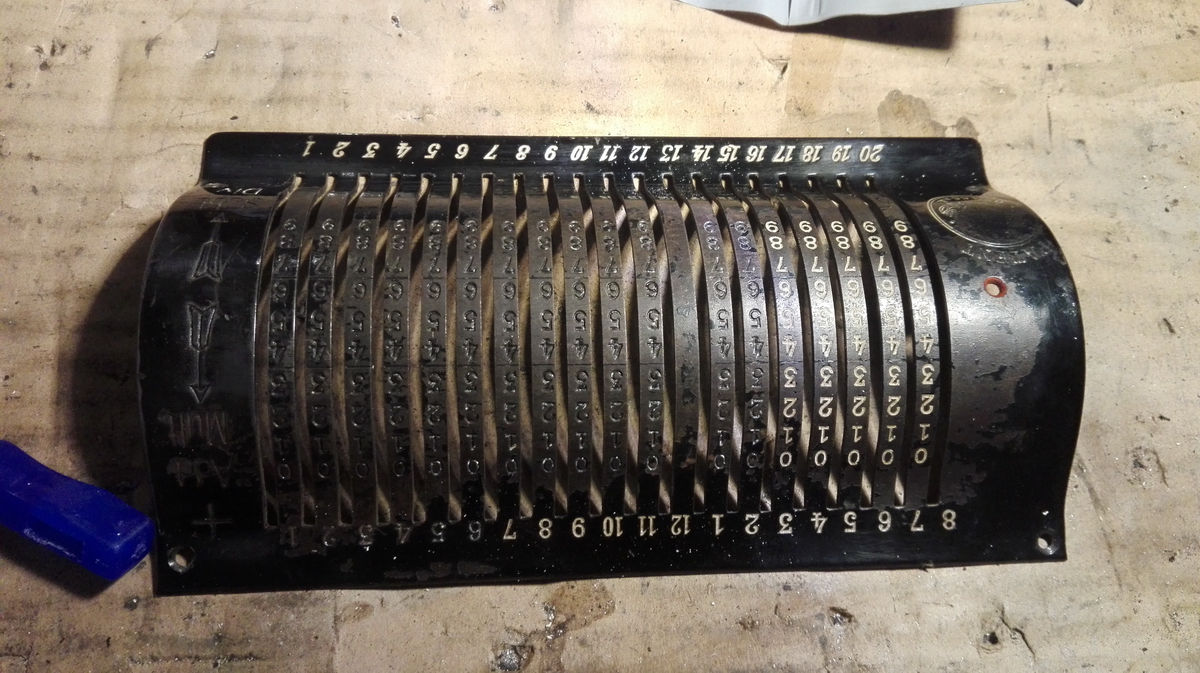
This is followed by masking off the paint that we want to save.
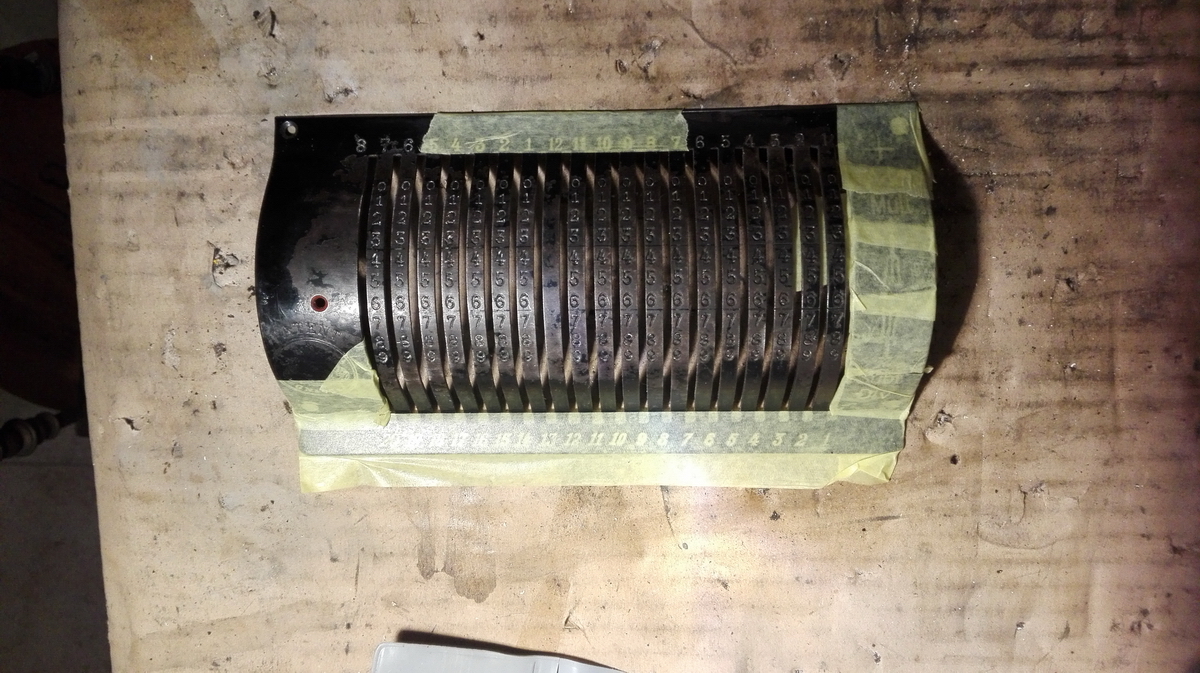
... painting the rest with new gloss black paint, and taking the protective tape off. Every part that is white in the following picture was not painted.
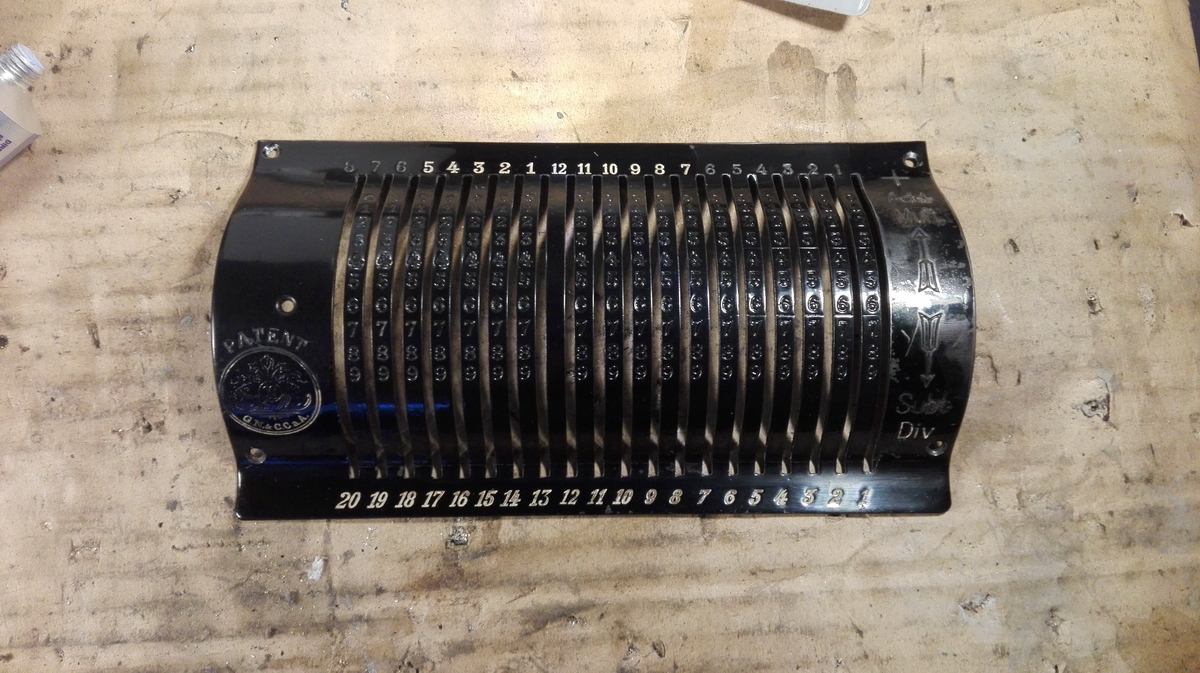
Then we blend in the paint with 1000, 2000 and 3000 grit wet and dry abrasive paper, and start filling in the numbers with specially prepared color-matched off-white latex paint.
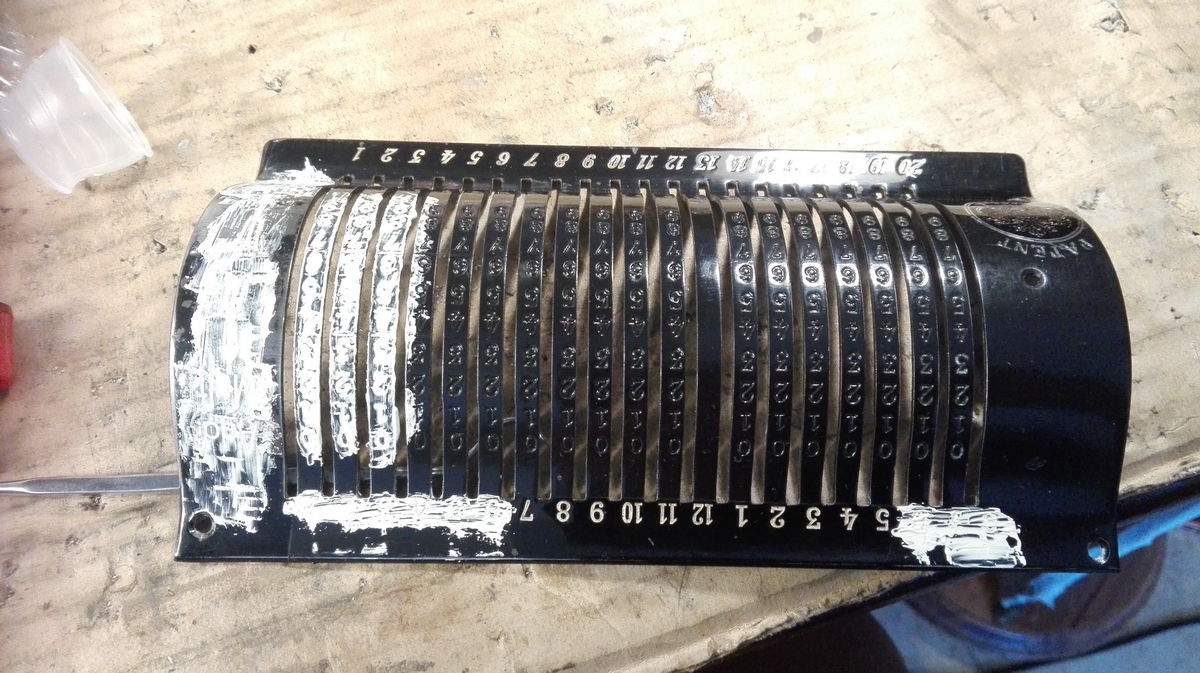
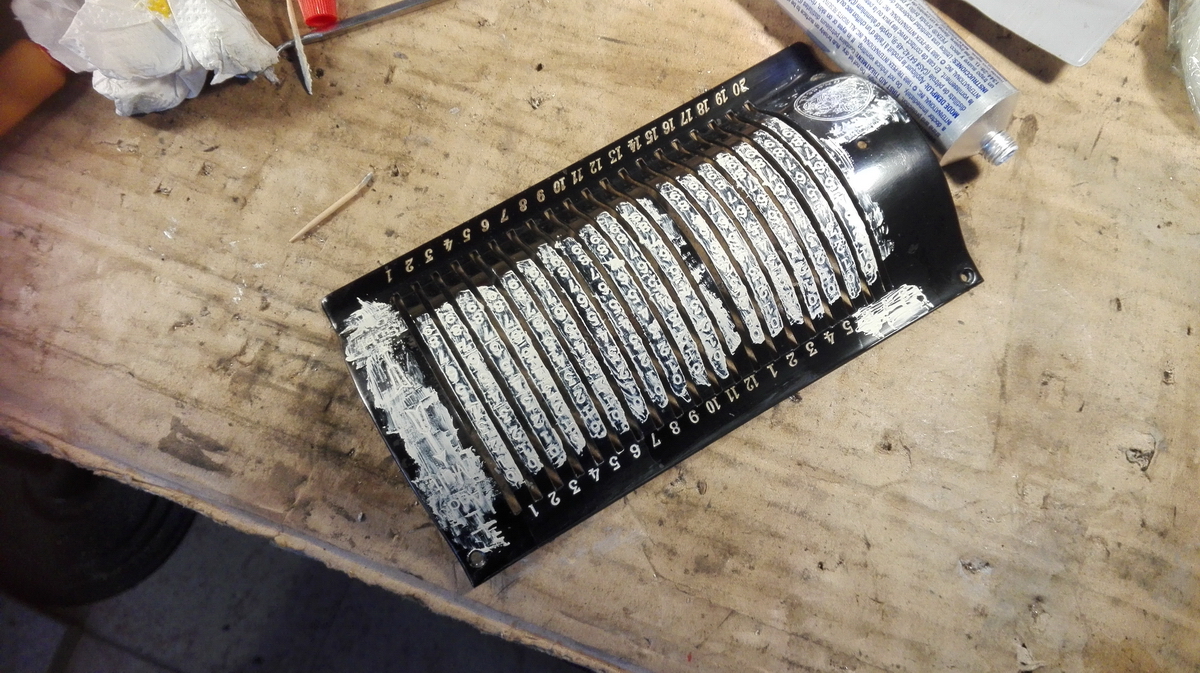
This is then cut back with metal polish and wet kitchen paper.
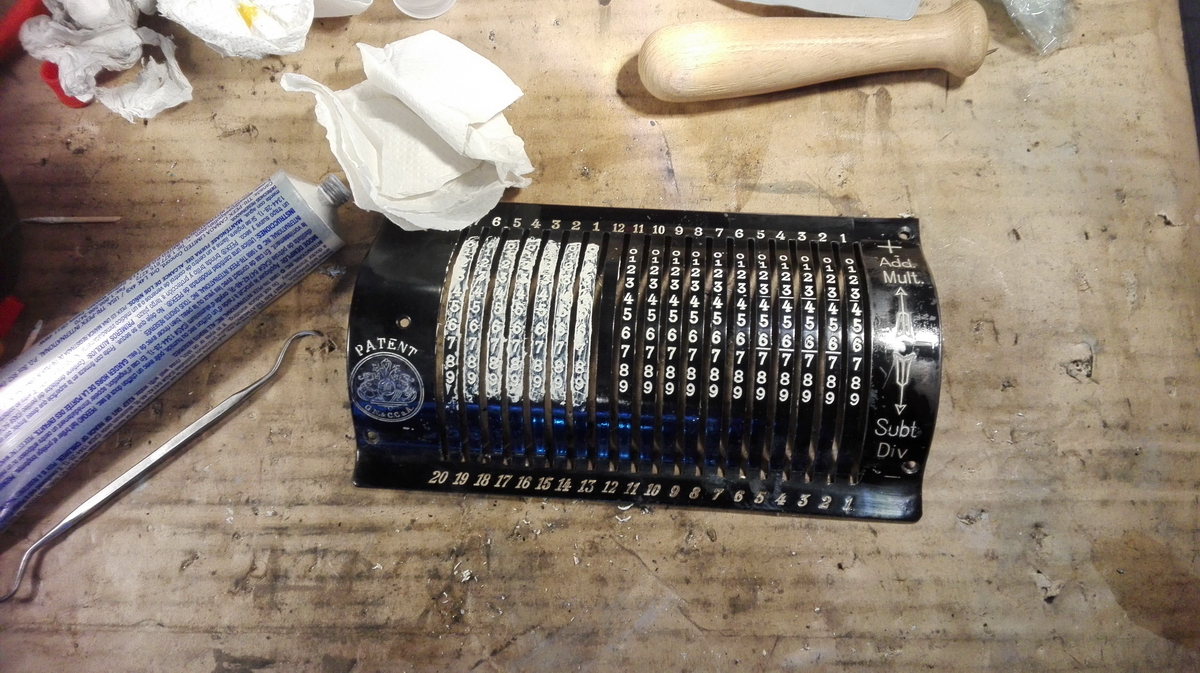
The handle didn't hold up, so I filled in the missing parts with two-part epoxy dyed black.
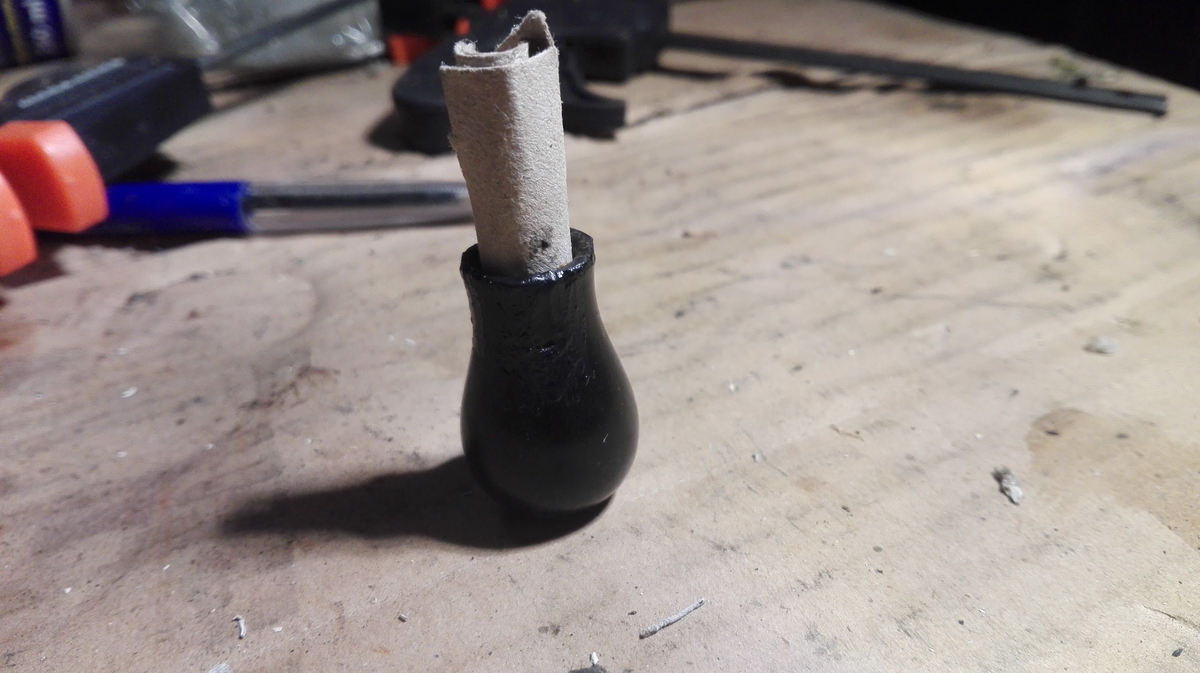
And now we have arrived at the white-gloves stage of the restoration, carefully reassembling everything without fingerprints or scratching:
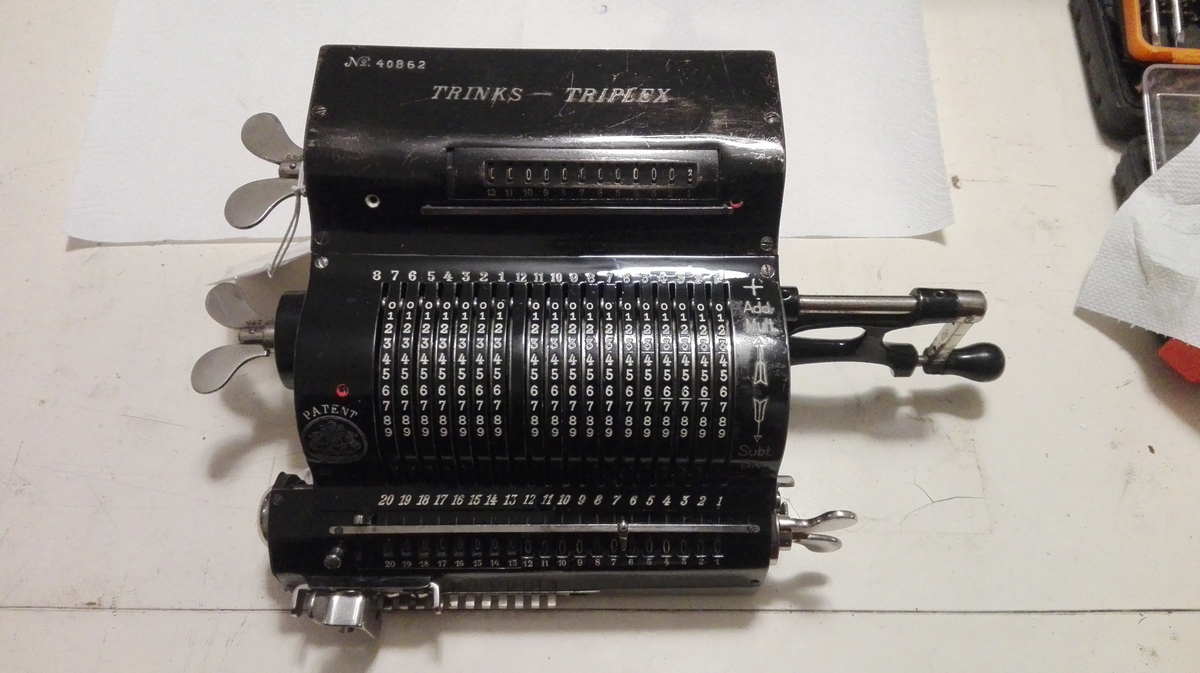
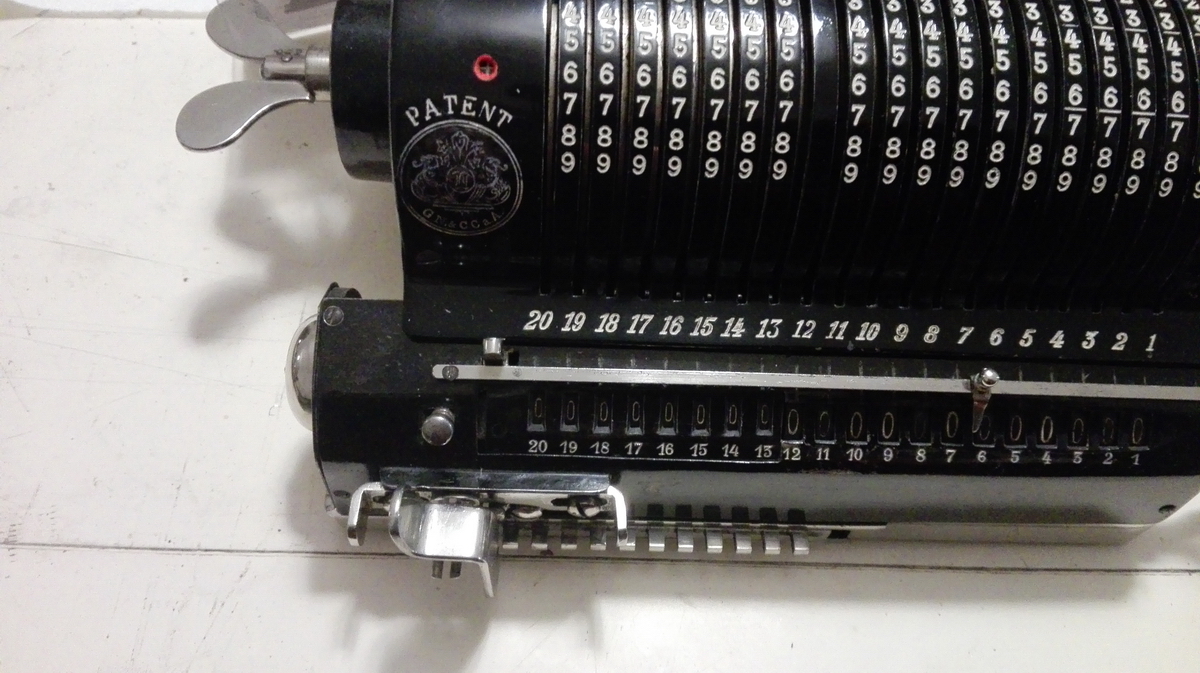
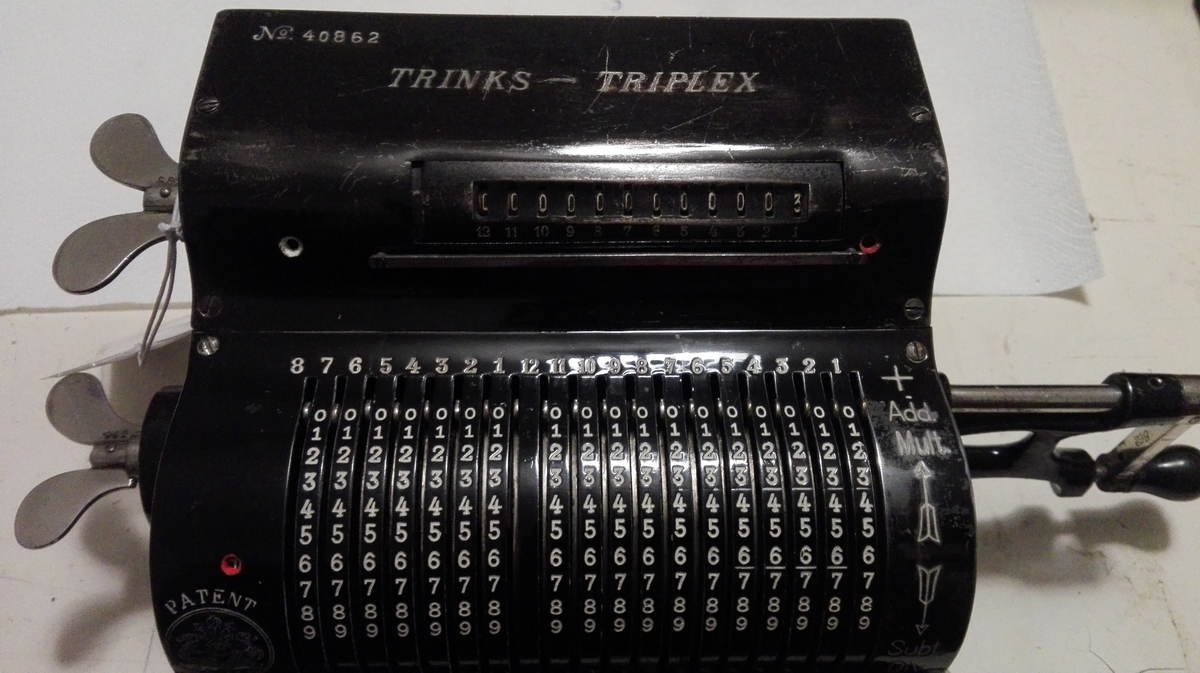
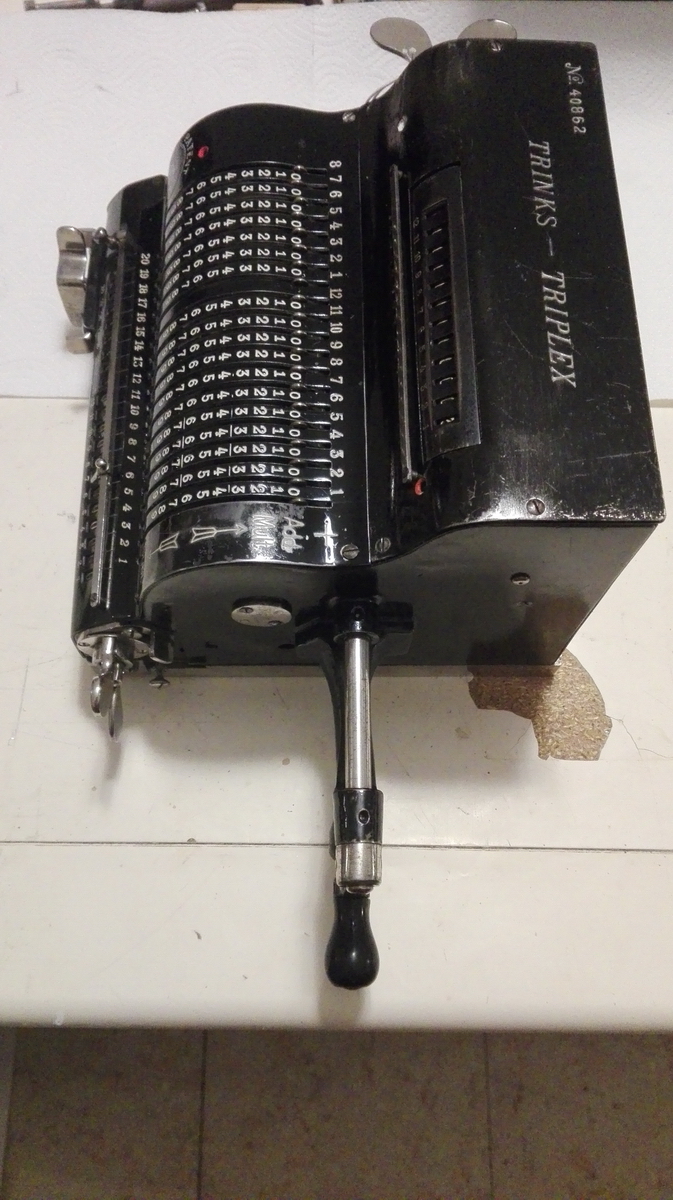
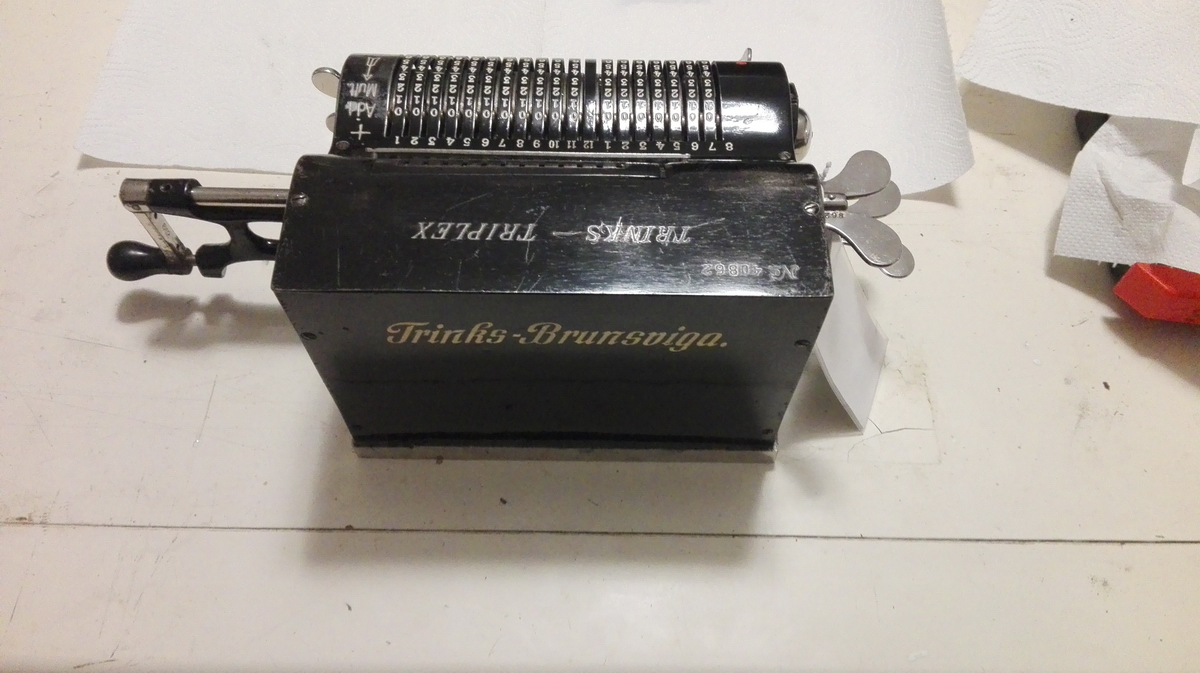
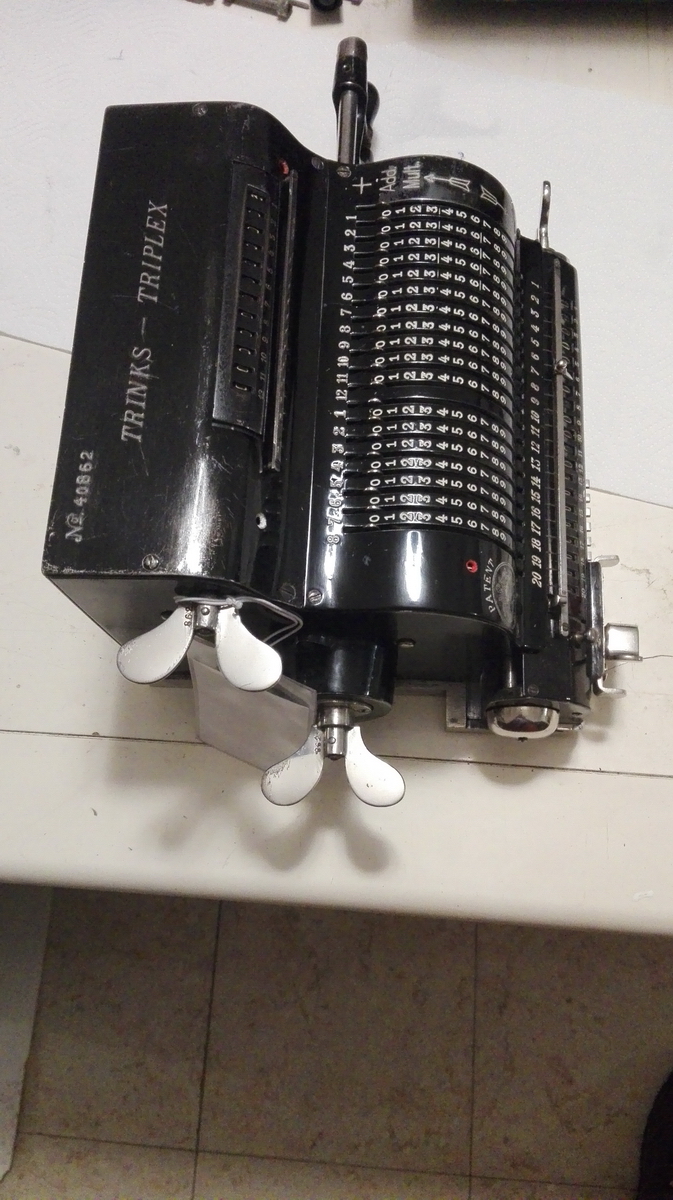
Quite the contrast!


Now what is so special about this machine that makes it different from any other Triplex out there ? It is quite easy to see that the configuration of the carriage is different from my other MDIIR - a "normal" Triplex has a carriage with a revolution counter without tens' carry on the left, and then 20 result positions at the right. This machine has no extra revolution counter, but the leftmost 10 positions in the result register have a shroud, the movement of which will transform them into their complement.
The provisions for clearing thus turn this into a double calculator for coordinate work - by making the right part of the register switchable to complements, you can effectively "virtually" rotate the two parts of the pinwheel cylinder in opposite directions, pre-empting the Odhner 135 by about 25 years. The only 2 problems with that are
There is a lever on the top left of the carriage which allows to clear (somewhat counterintuitively) only the right part of the register, a knob on the right which allows to clear only the left part, and then turning the butterfly without operating any of these controls will clear the entire register. There is an additional pull-out knob on the side of the carriage that will disengage the tens carry between position 12 and 13 when pulled out, to be able to calculate with completely separate registers.
The effect of the shroud thus seems a bit pointless, and it only really shines if you use the left part of the result register differently, namely as a second counter register, by setting the first pin of the left part of the pinwheel cylinder to 1, and then calculating normally. You can then have two counter registers with tens' carry, which is great for doing statistics (simultaneous calculation of the sum of differences with the average, and the sum of their squares), as well as for sums of quotients. The tradeoff is however, that you only have 13 positions available for the result.
A final creative use of this "adaptable" counter register would be to calculate in nondecimal currency in the fashion of the Odhner Lusid - you would manually have to adjust whether the counter register counts 1, 2 or 24 for pounds, shillings and pence.
